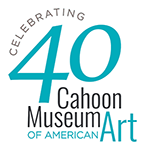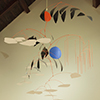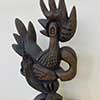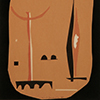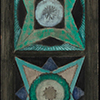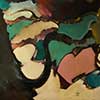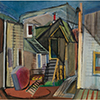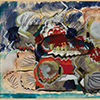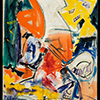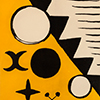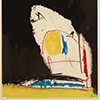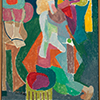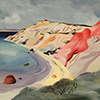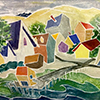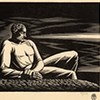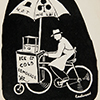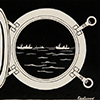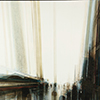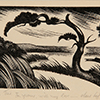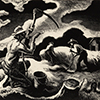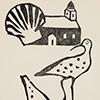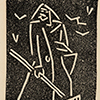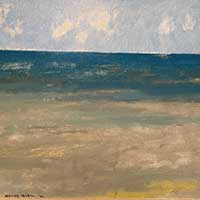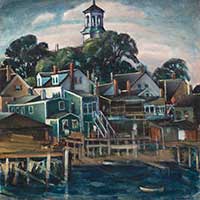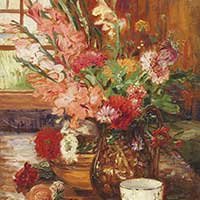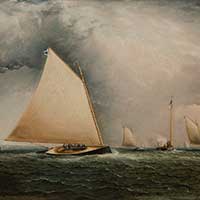
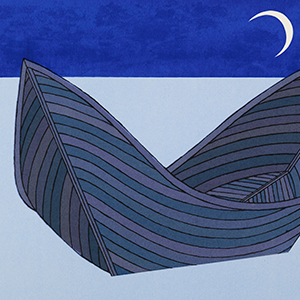
Modern Mix: Selections from the Cape Cod Museum of Art & the Cahoon Museum of American Art Travelling Show
August 1 – September 5, 2020
Traveled to the Cape Cod Museum of Art | September 24 – December 6, 2020
This collaborative exhibition between two of Cape Cod’s esteemed art museums presents colorful, bold artwork from the modern art period. In the time approximately from the late nineteenth and into the twentieth century, artists broke with traditions of the past in a spirit of experimentation and explored various movements including abstraction and expressionism.
Modern Mix tells the stories of the visionary collectors and community supporters who founded the museums to preserve and present the work of American artists from Cape Cod and beyond. While each museum shares the mission of education and enjoyment of art, both institutions have a unique identity and purpose. The Cape Cod Museum of Art emphasizes the art and artists of our region, the Cape and Islands, while the Cahoon Museum of American Art focuses on a broader story of American art and the art of New England. Both museums play an essential part of preserving our collective history and celebrating the beauty and joy around us.
About the Cape Cod Museum of Art
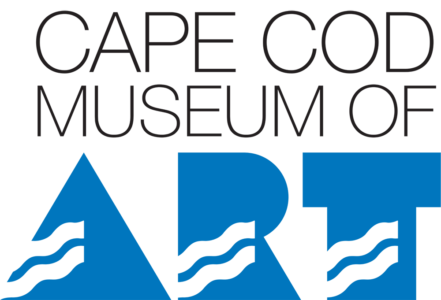
Sponsored by an Anonymous Trustee
With additional support from Robert Paul Properties

Modern Mix: Selections from the Cape Cod Museum of Art & the Cahoon Museum of American Art Travelling Show
On view at the Cape Cod Museum of Art | September 24 – December 6
This collaborative exhibition between two of Cape Cod’s esteemed art museums presents colorful, bold artwork from the modern art period. In the time approximately from the late nineteenth and into the twentieth century, artists broke with traditions of the past in a spirit of experimentation and explored various movements including abstraction and expressionism.
About the Cape Cod Museum of Art

Sponsored by an Anonymous Trustee
With additional support from Robert Paul Properties
Modern Mix: from the Collection of the Cape Cod Museum of Art
Click on images below to enlarge.
Modern Mix: from the Collection of the Cape Cod Museum of Art
For details on individual art works please access the full page via pc web browser.
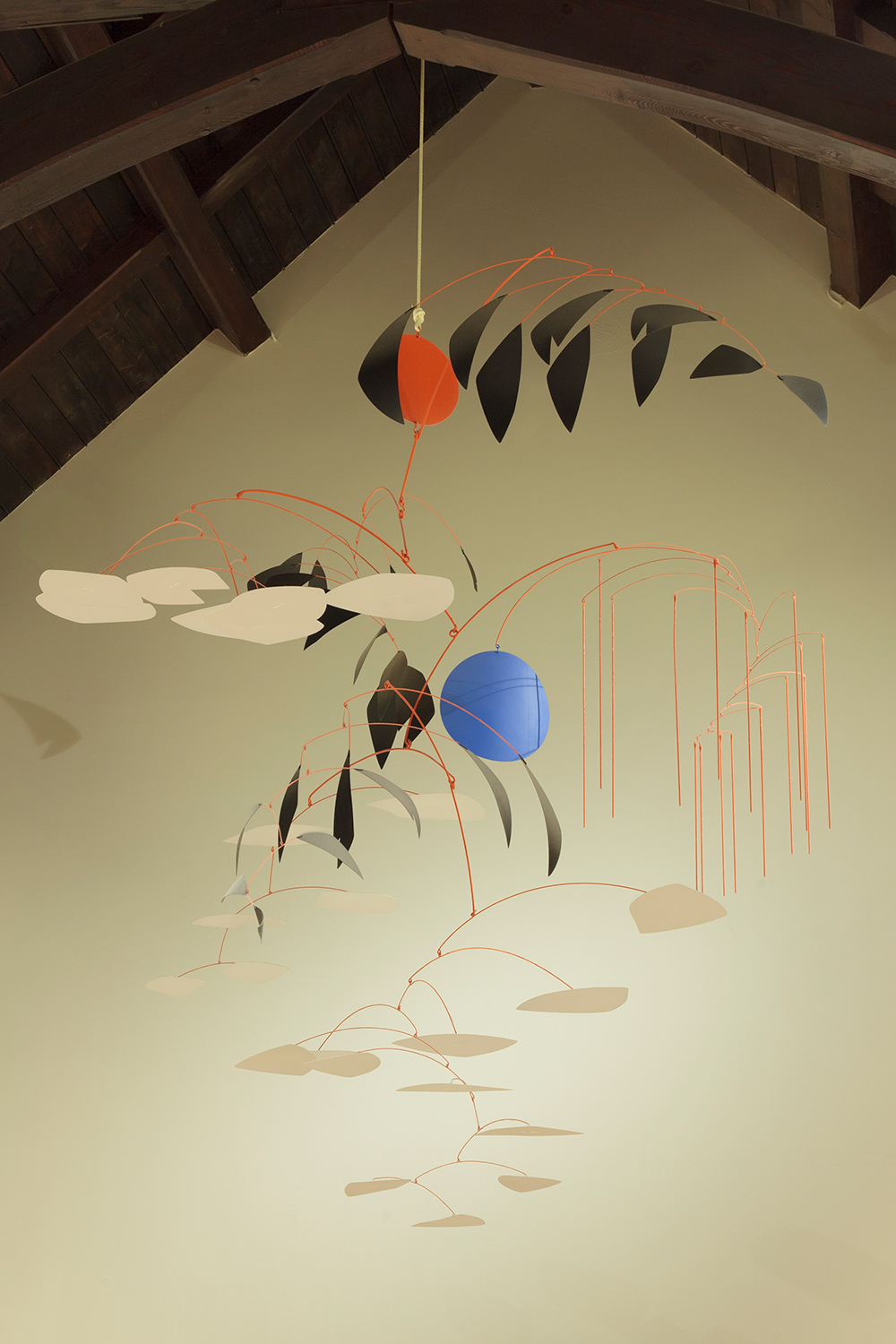

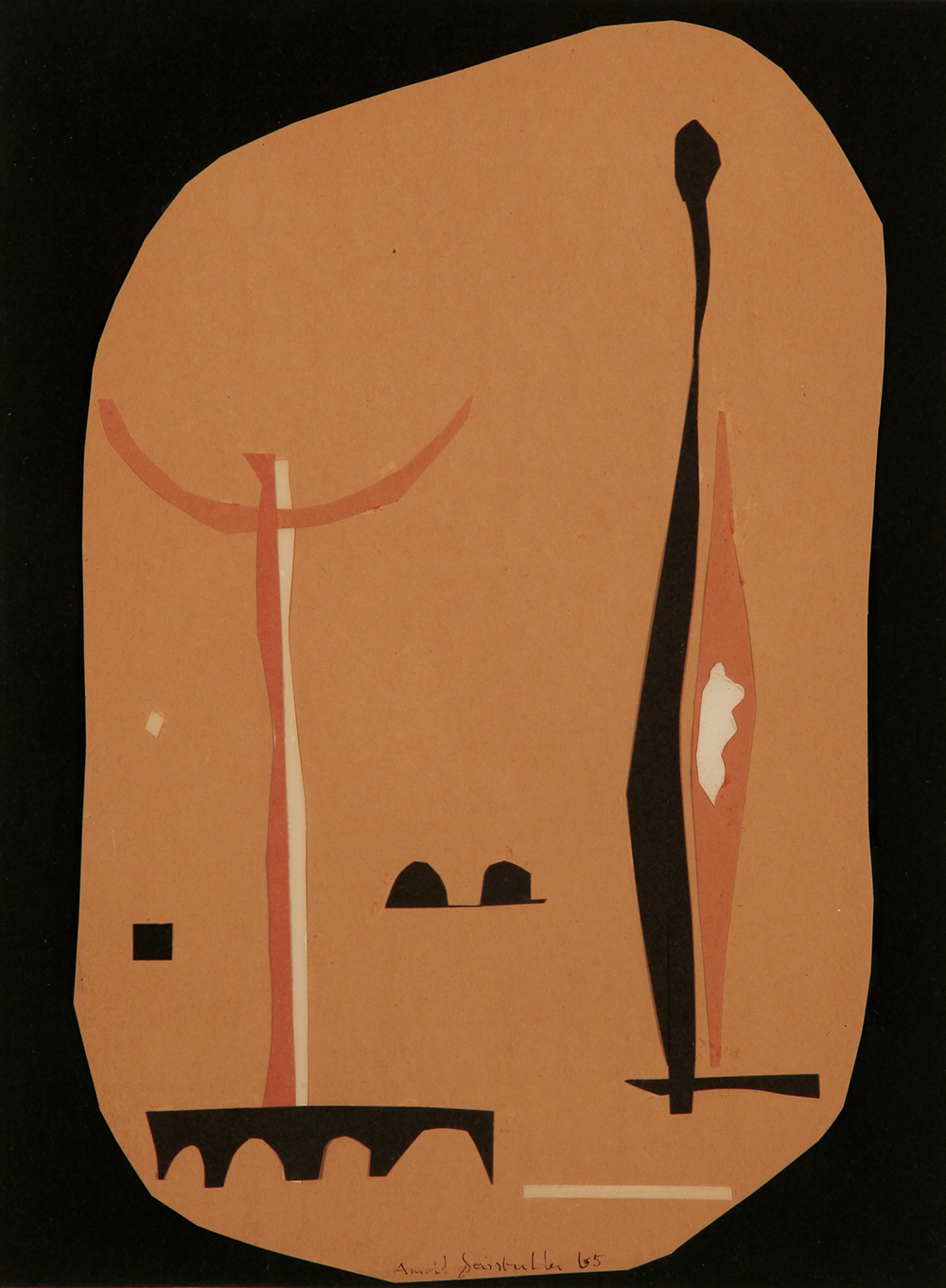

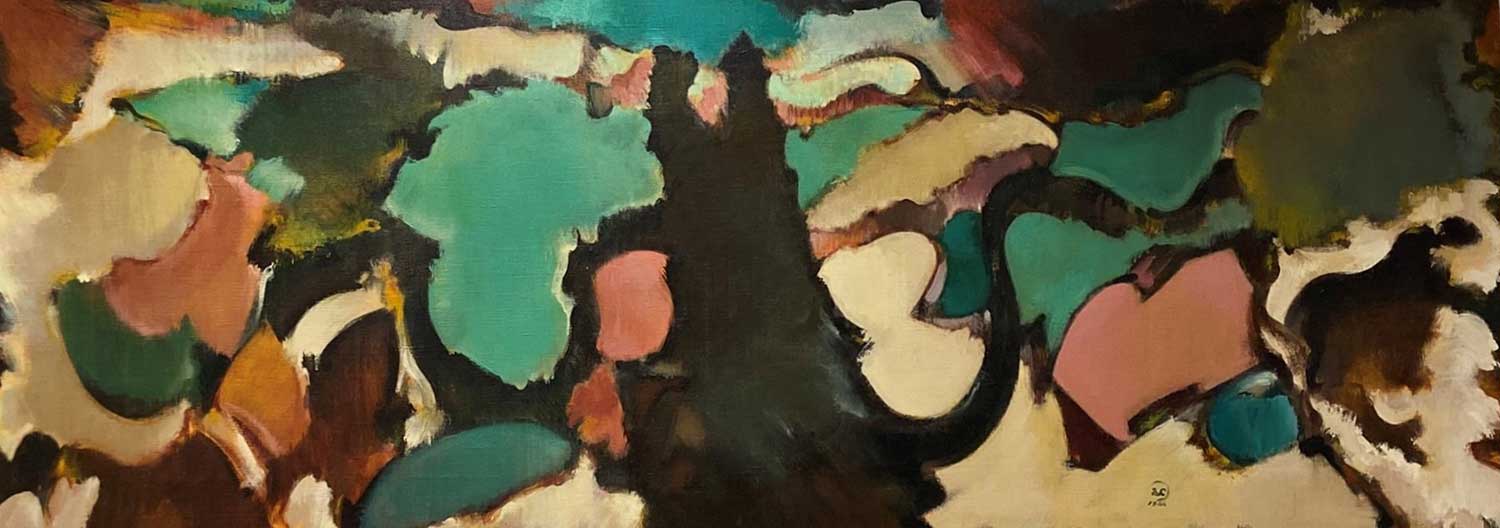
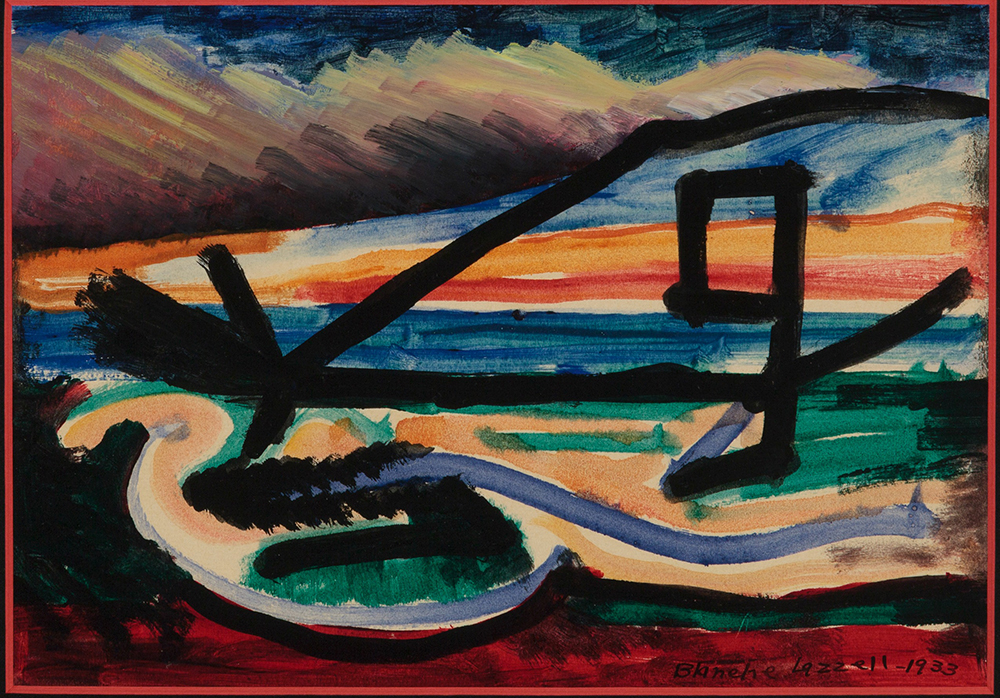

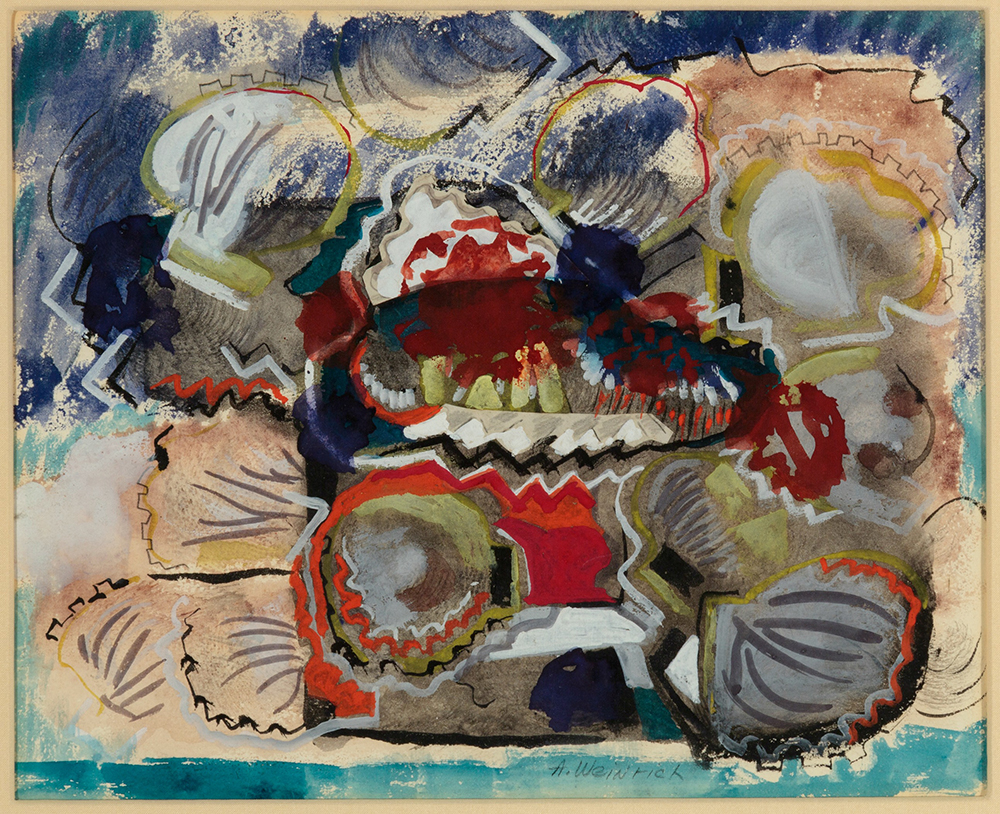

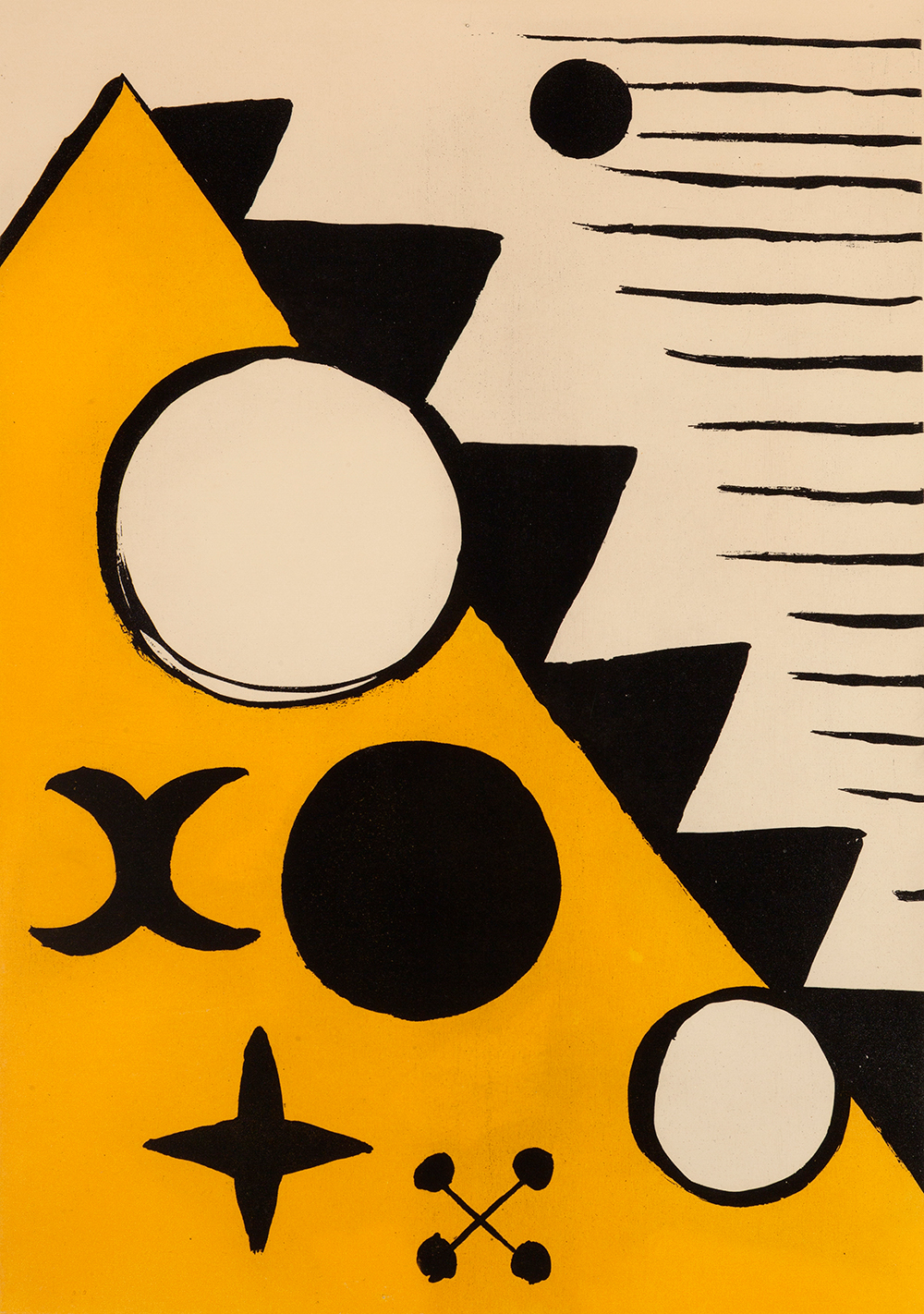
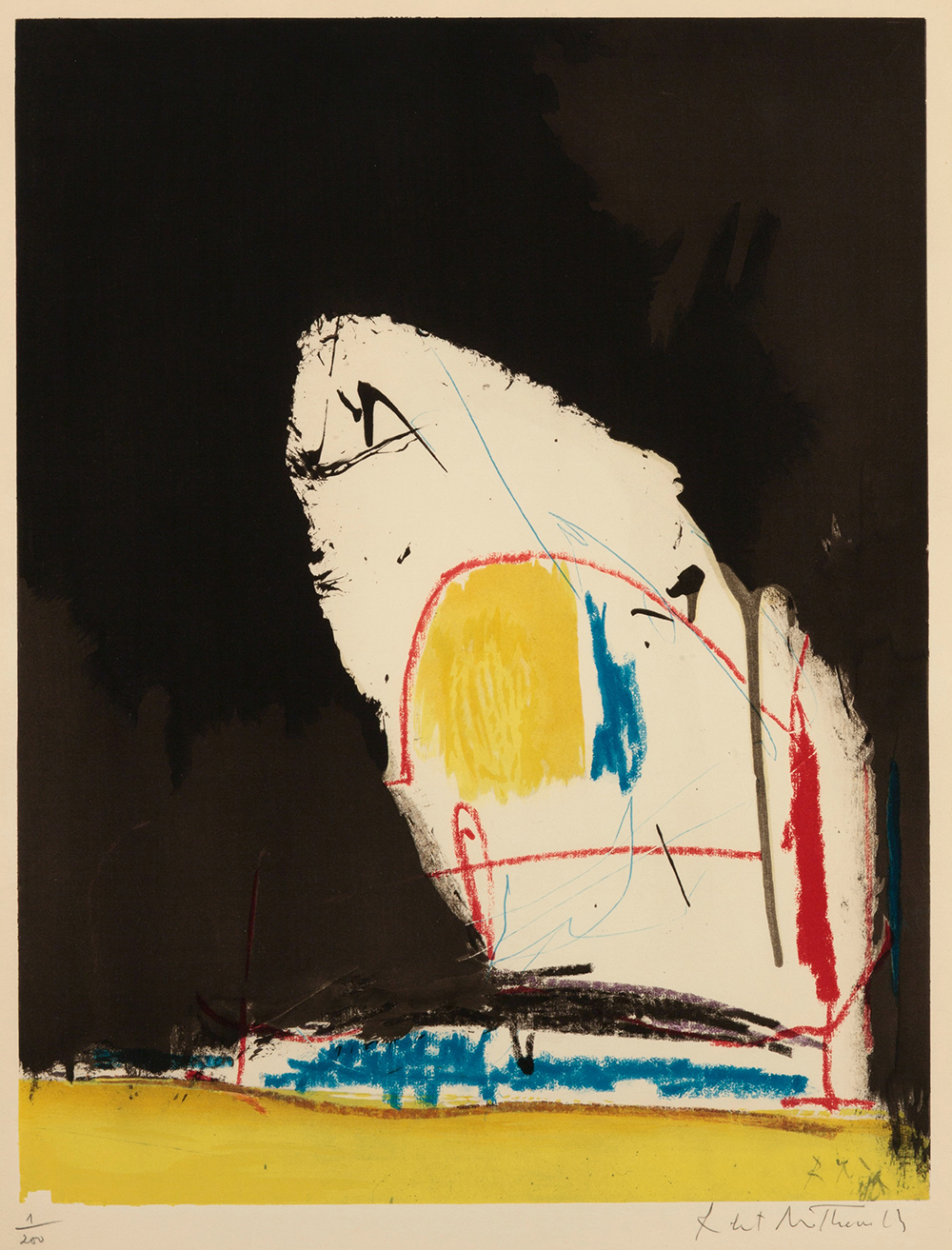
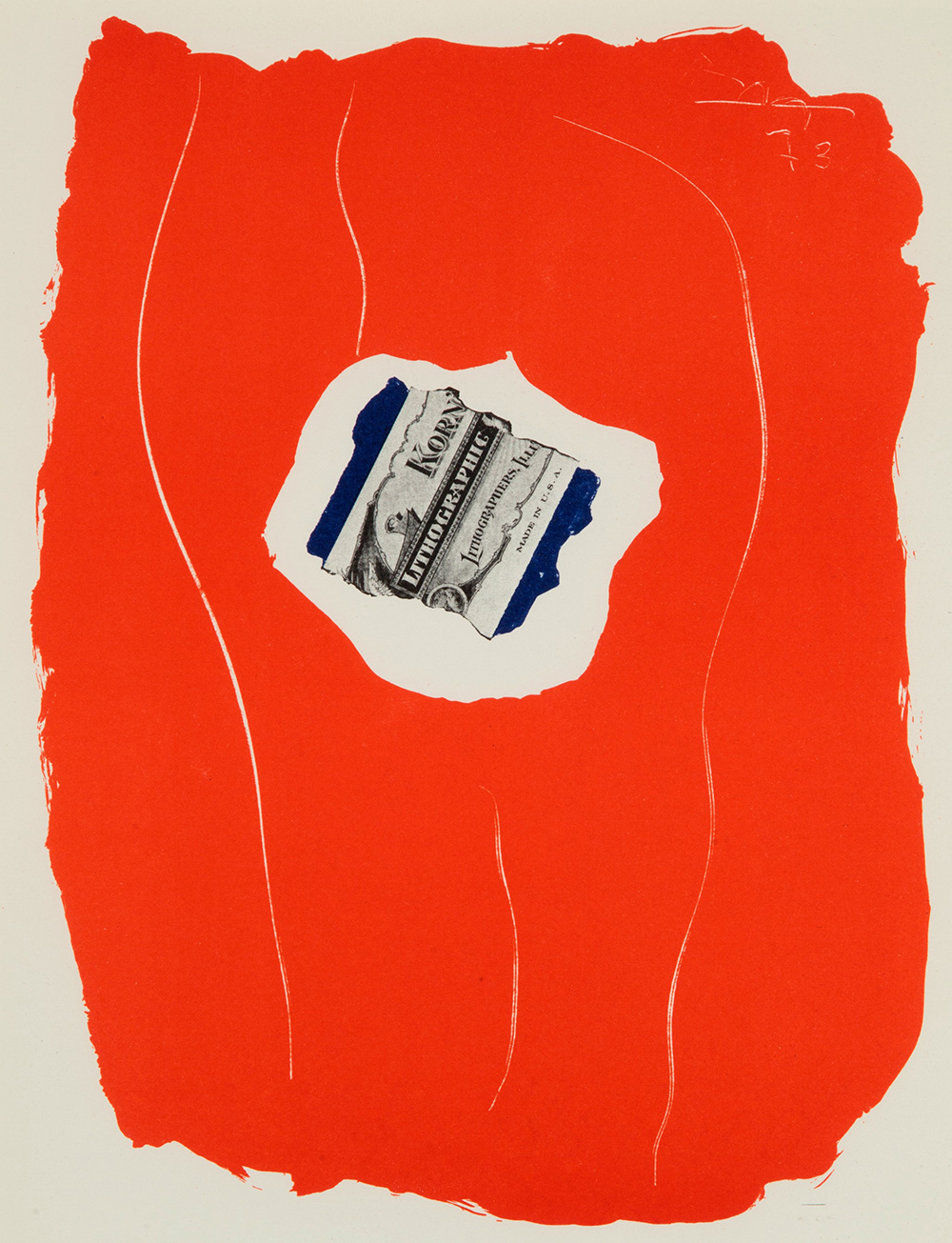
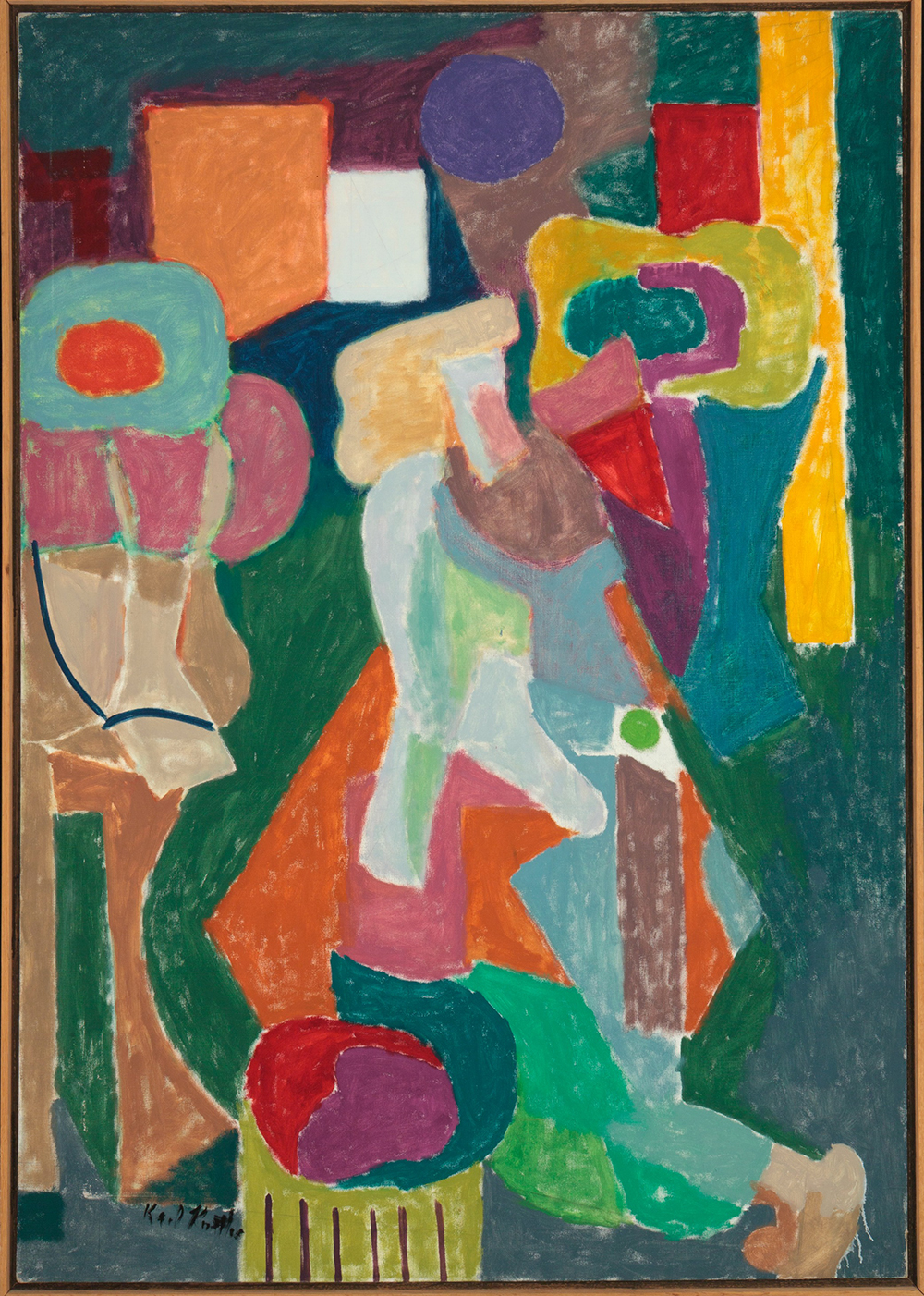

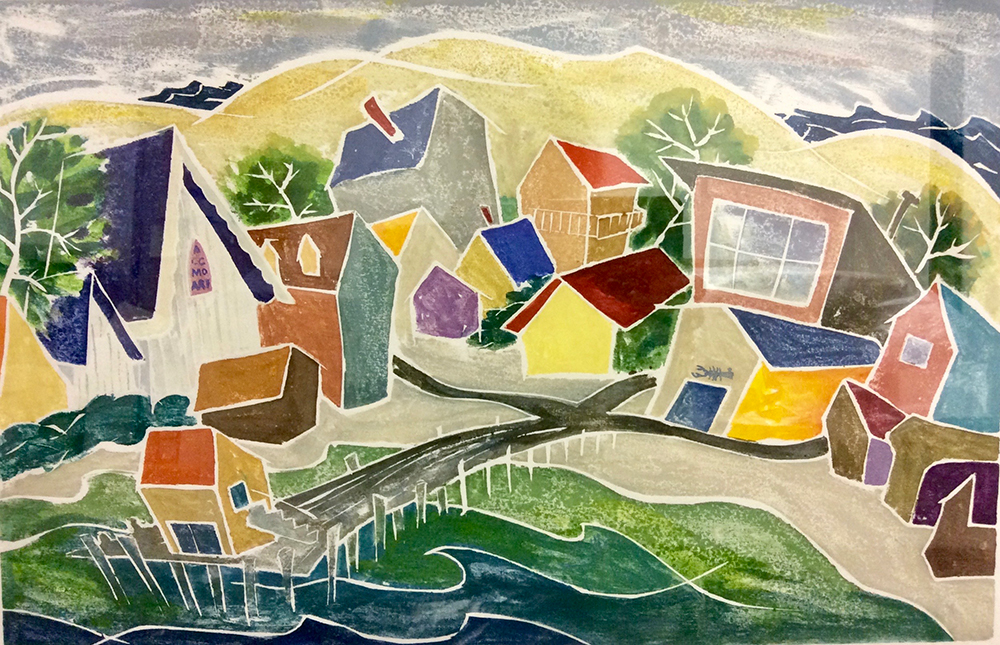

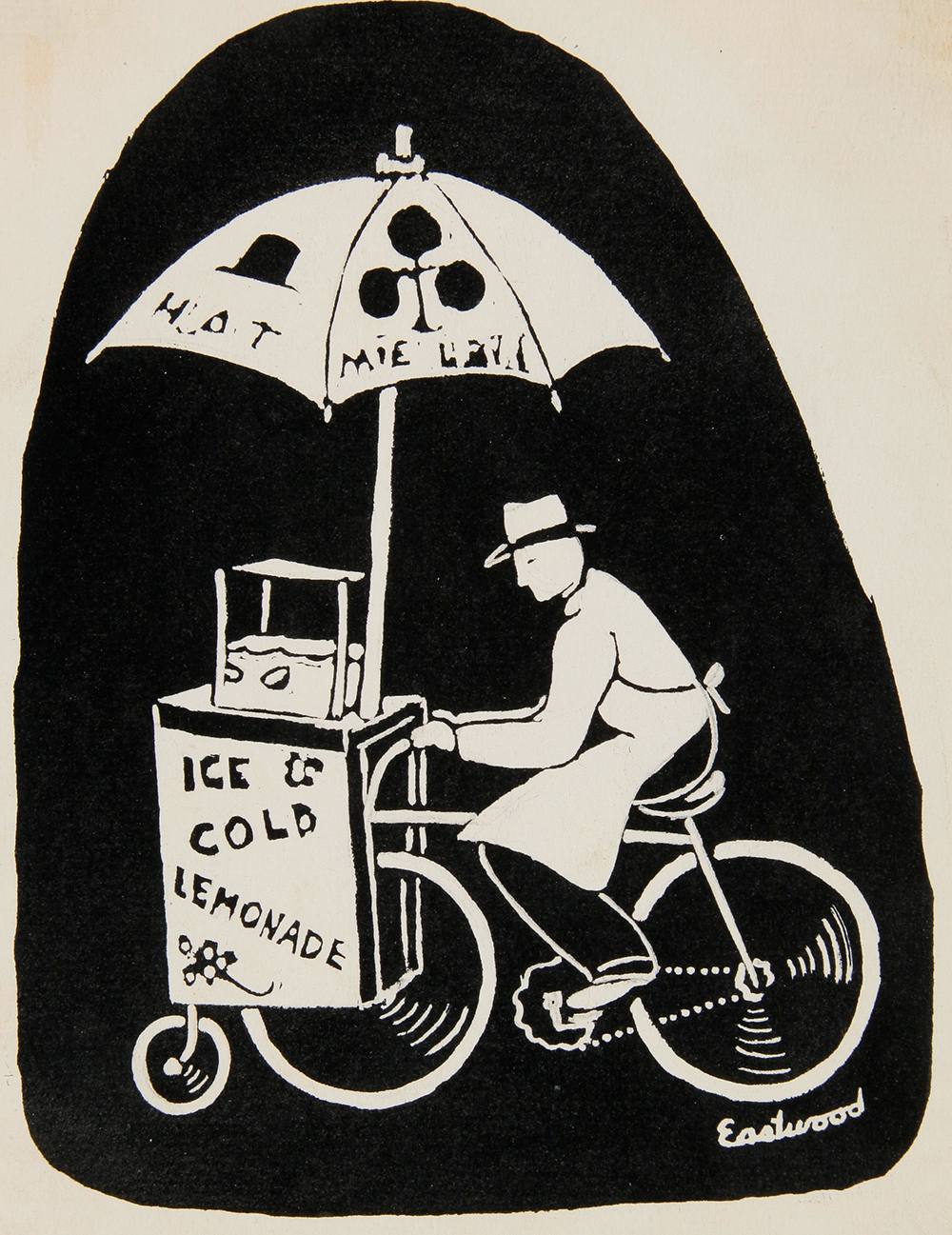
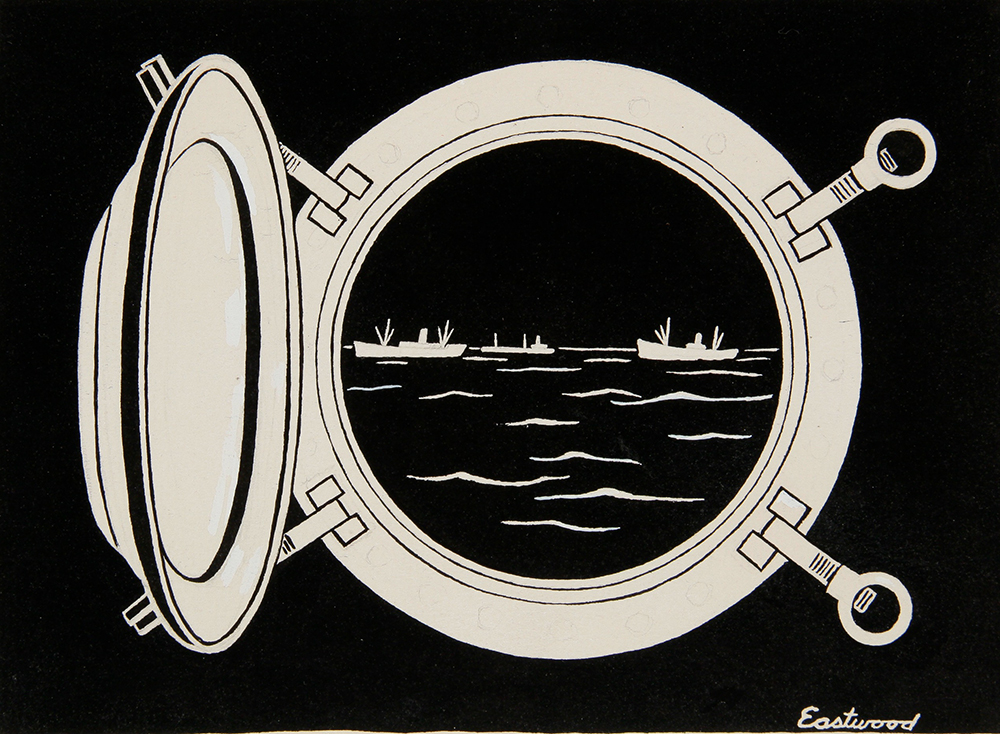
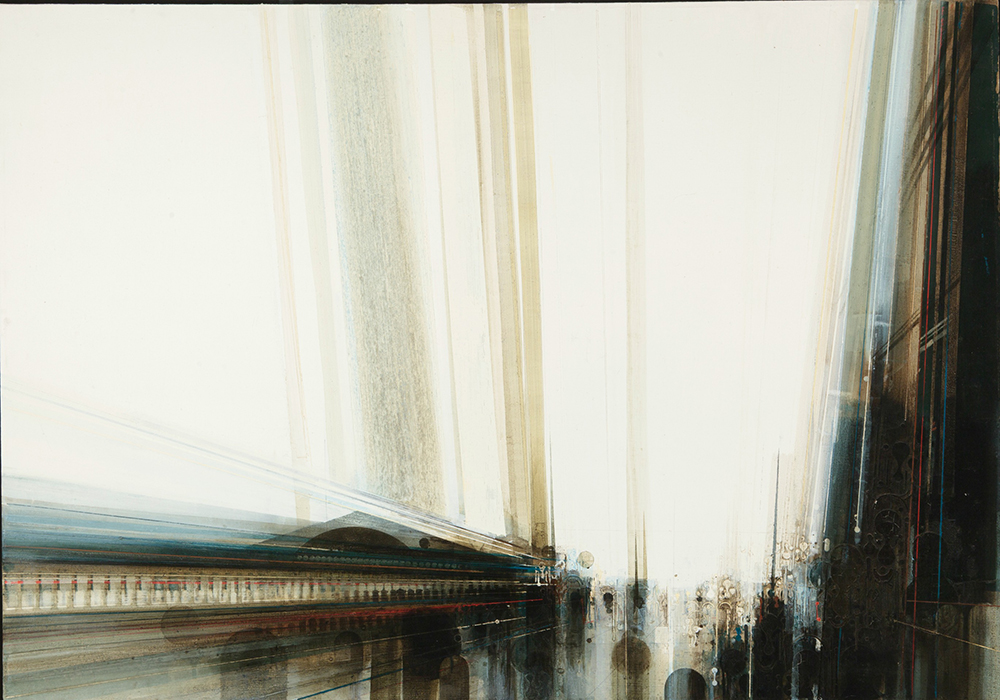

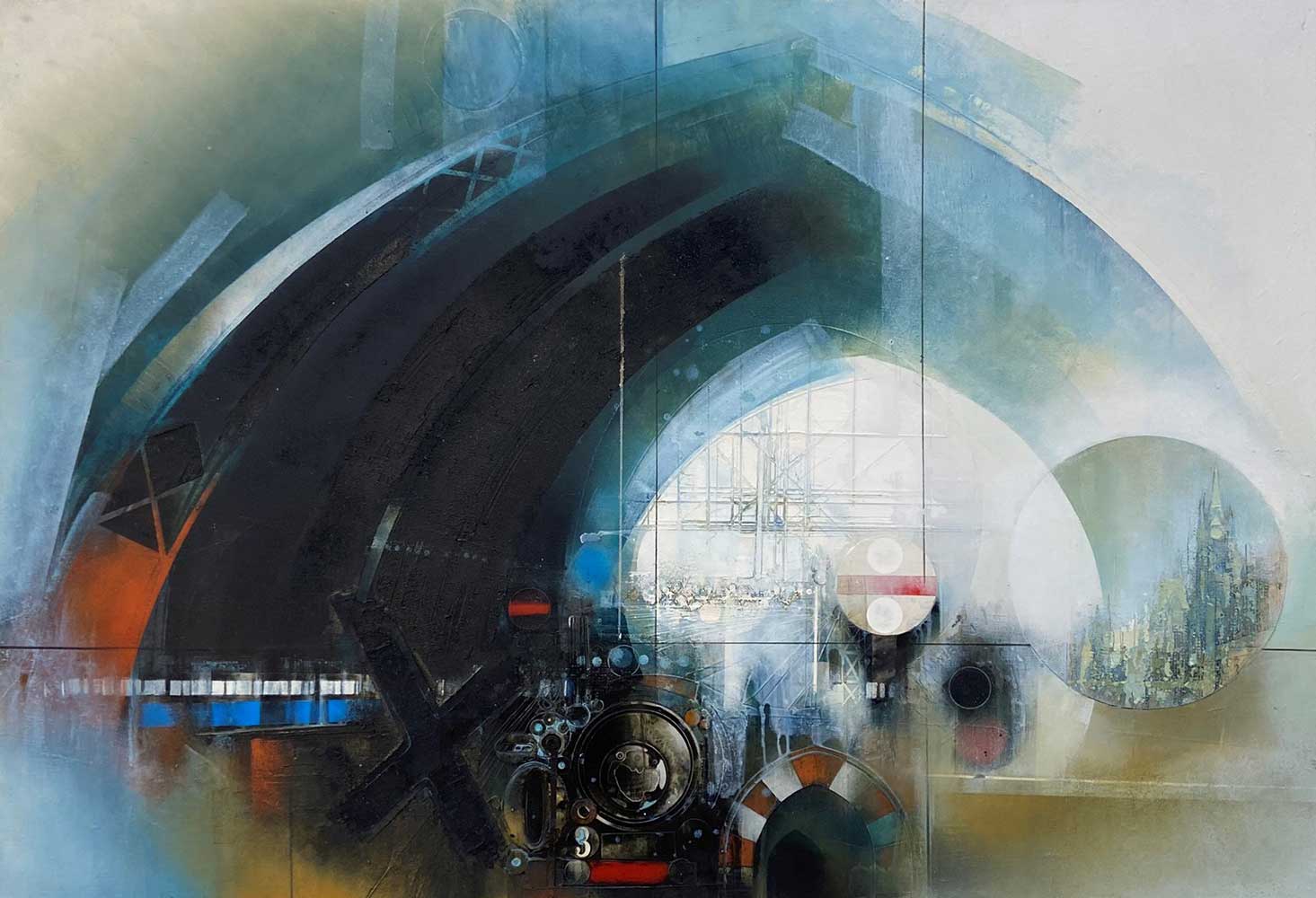
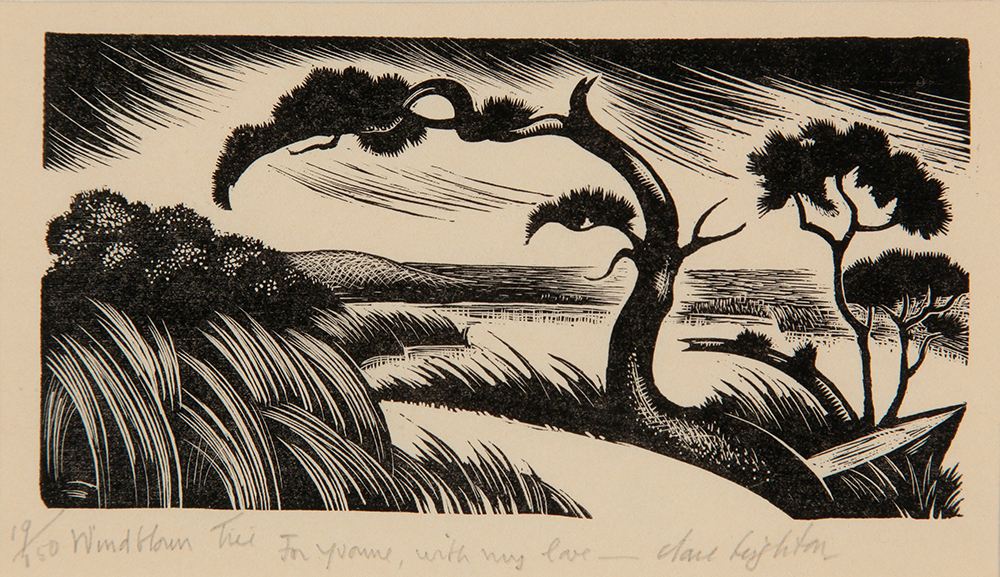
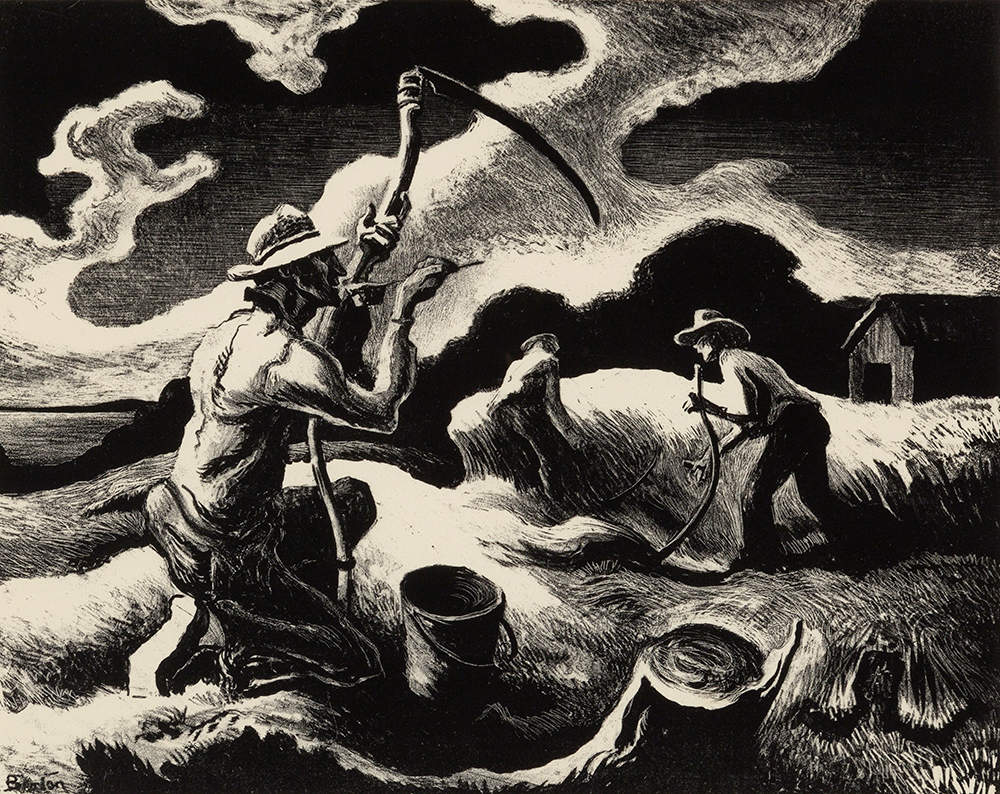
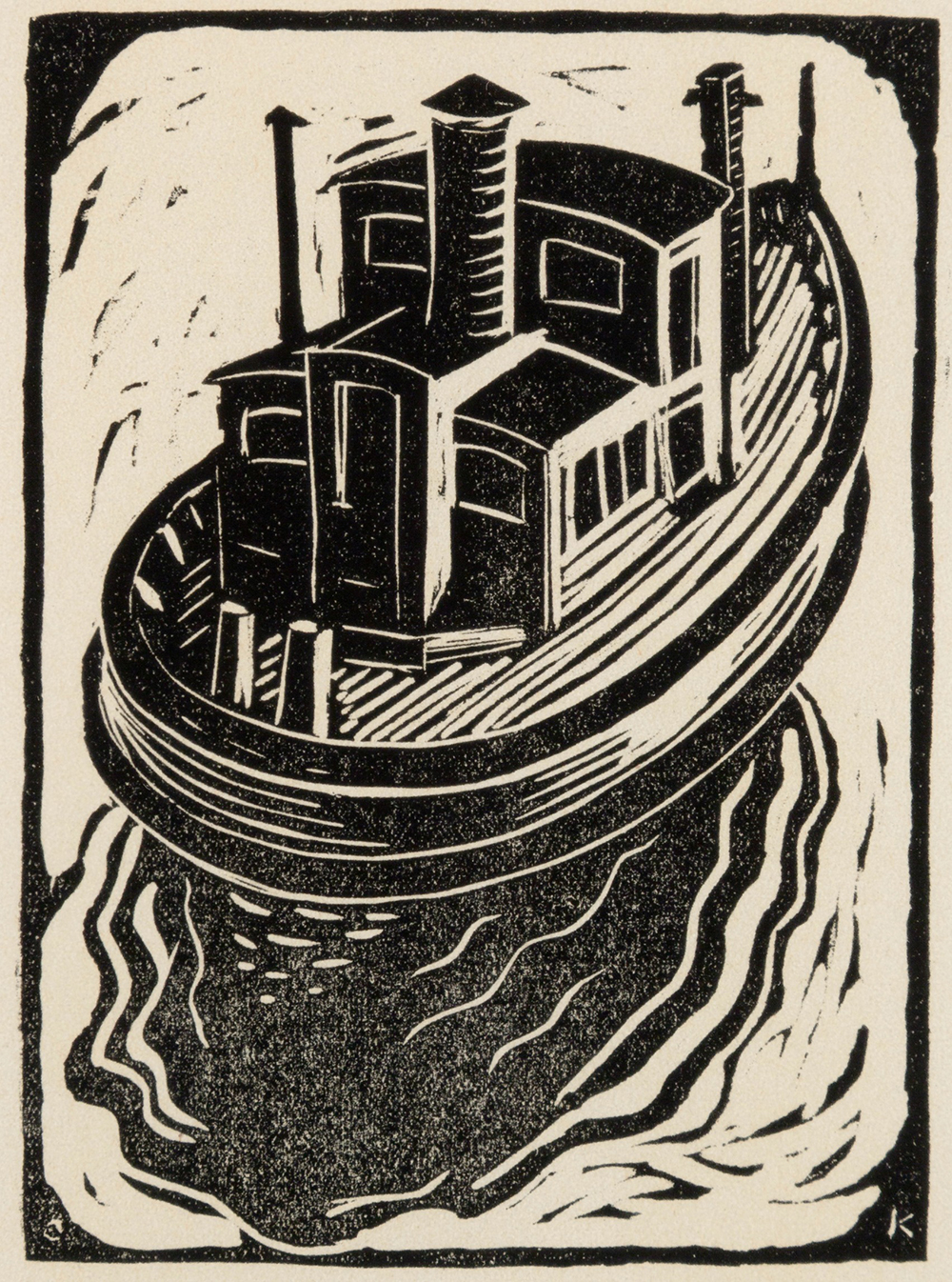
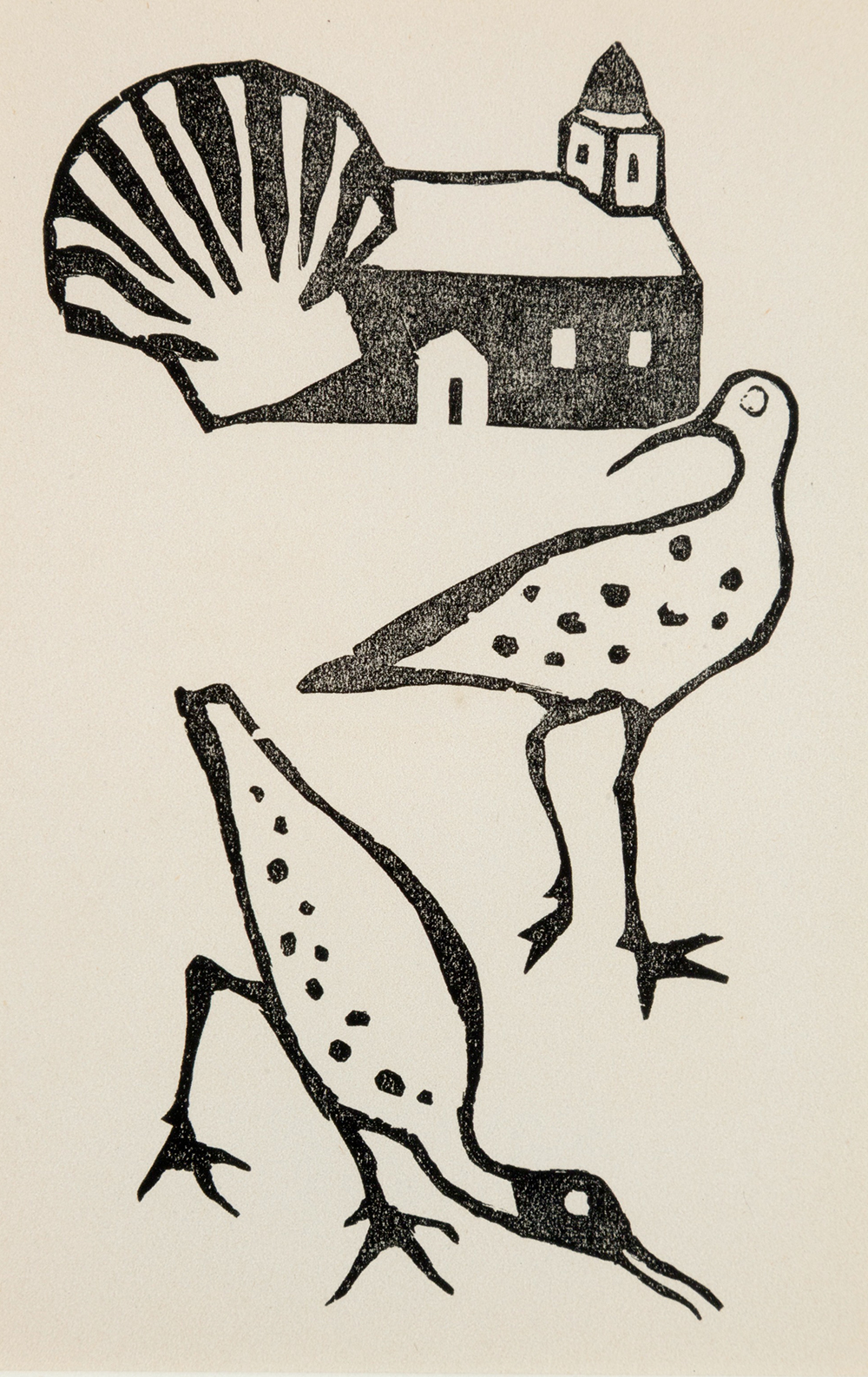
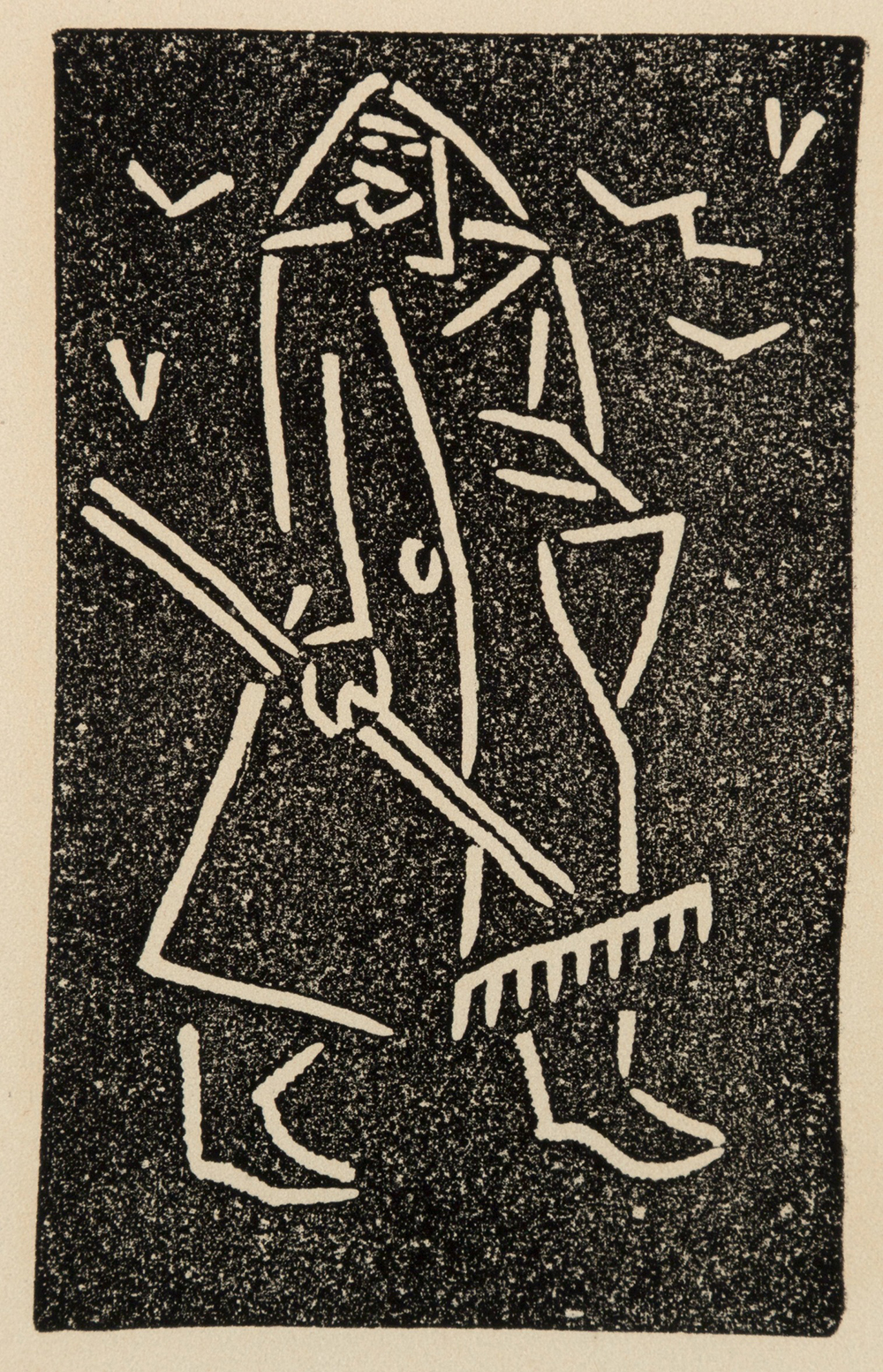
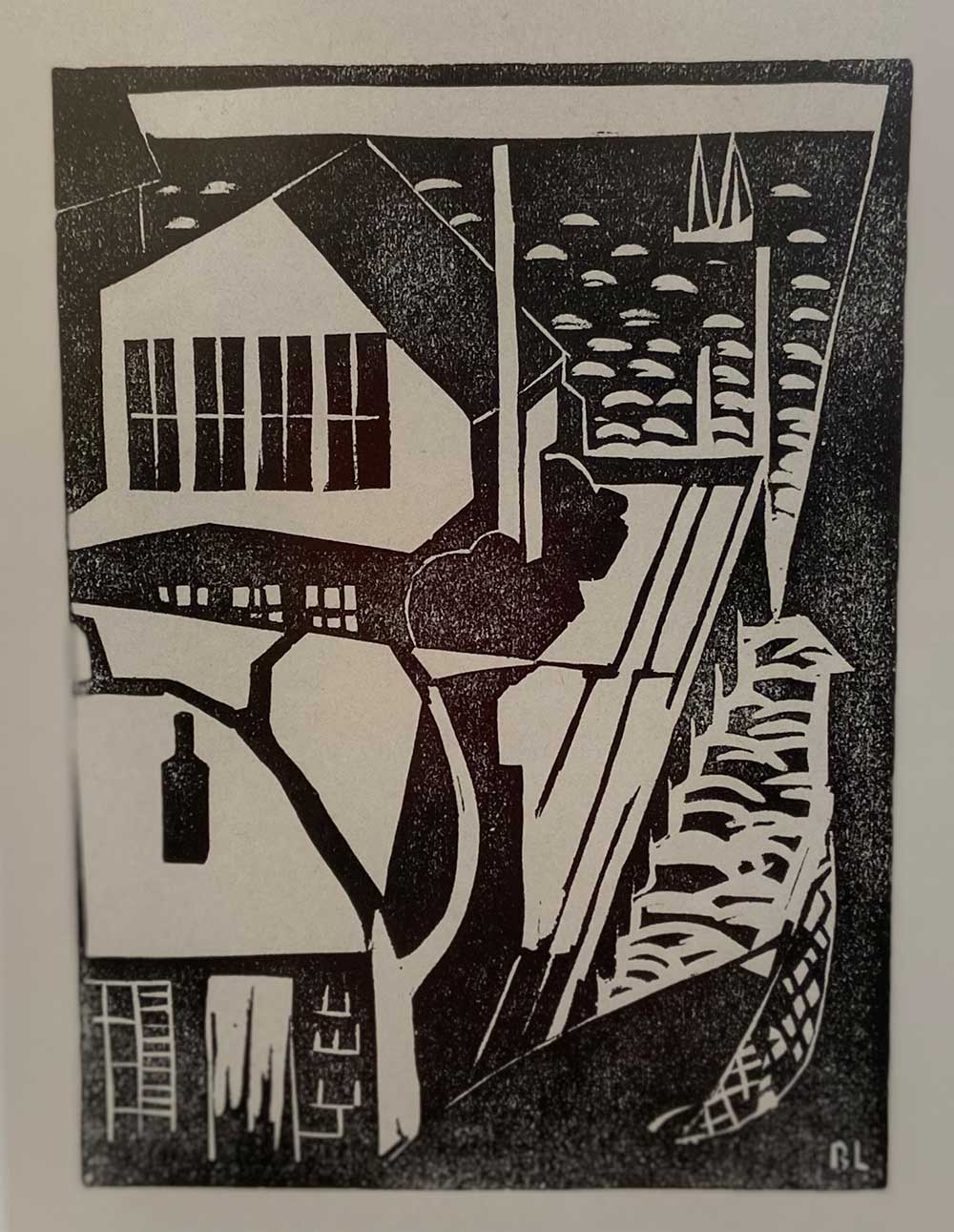
Modern Mix: from the Collection of the Cahoon Museum of American Art
Click on images below to enlarge to see some examples of what’s on view.
Modern Mix: from the Collection of the Cahoon Museum of American Art
For details on individual art works please access the full page via pc web browser.

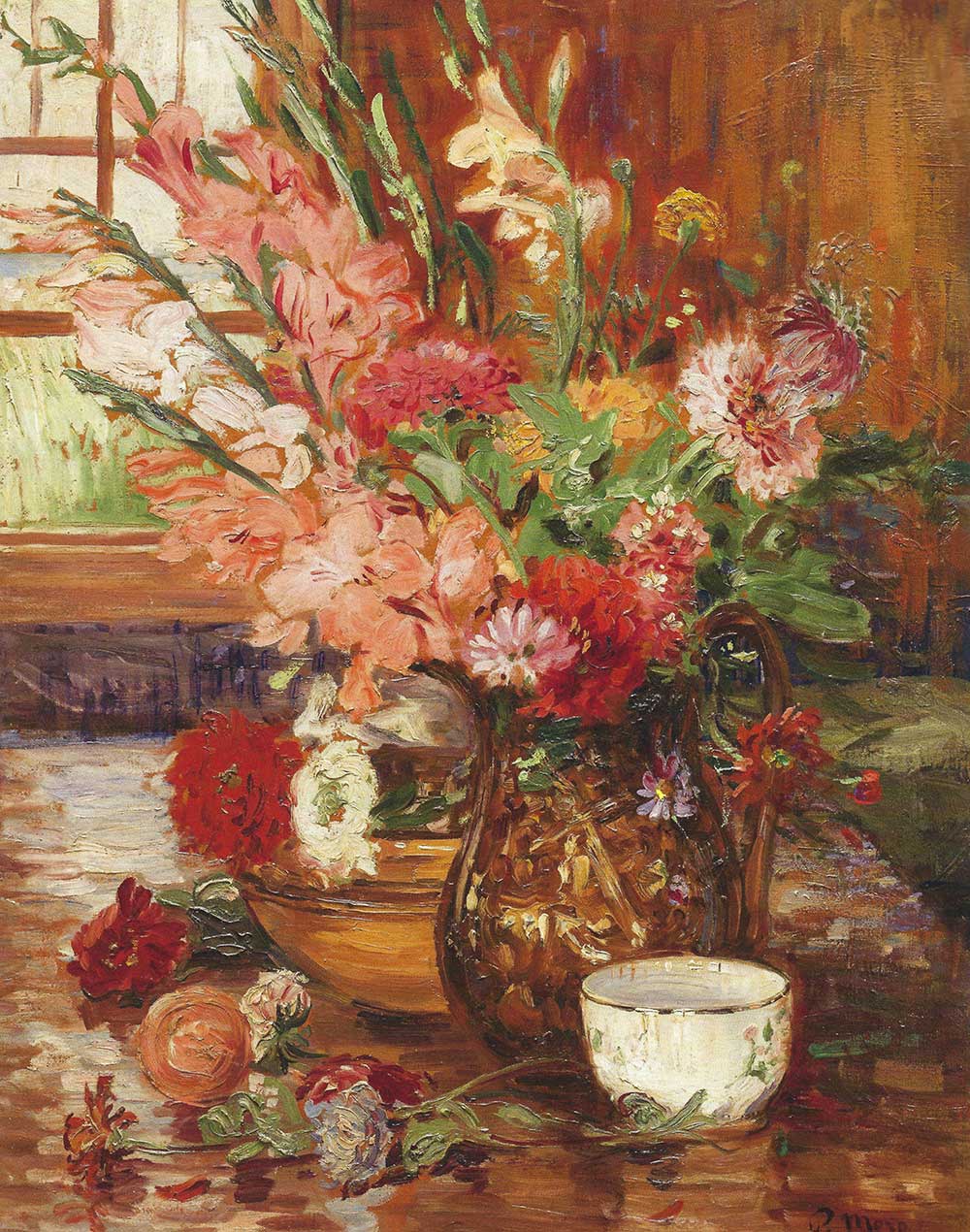

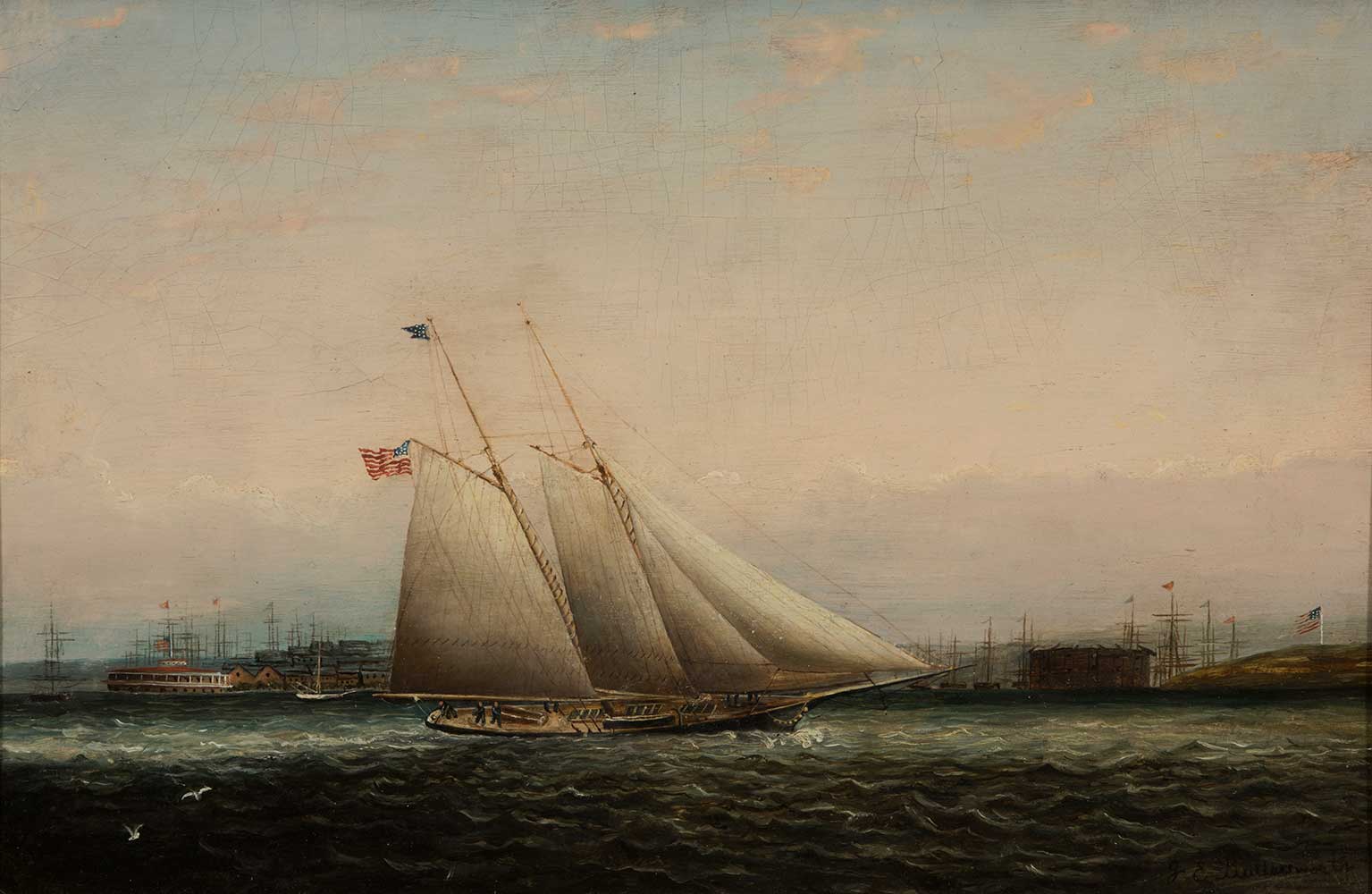

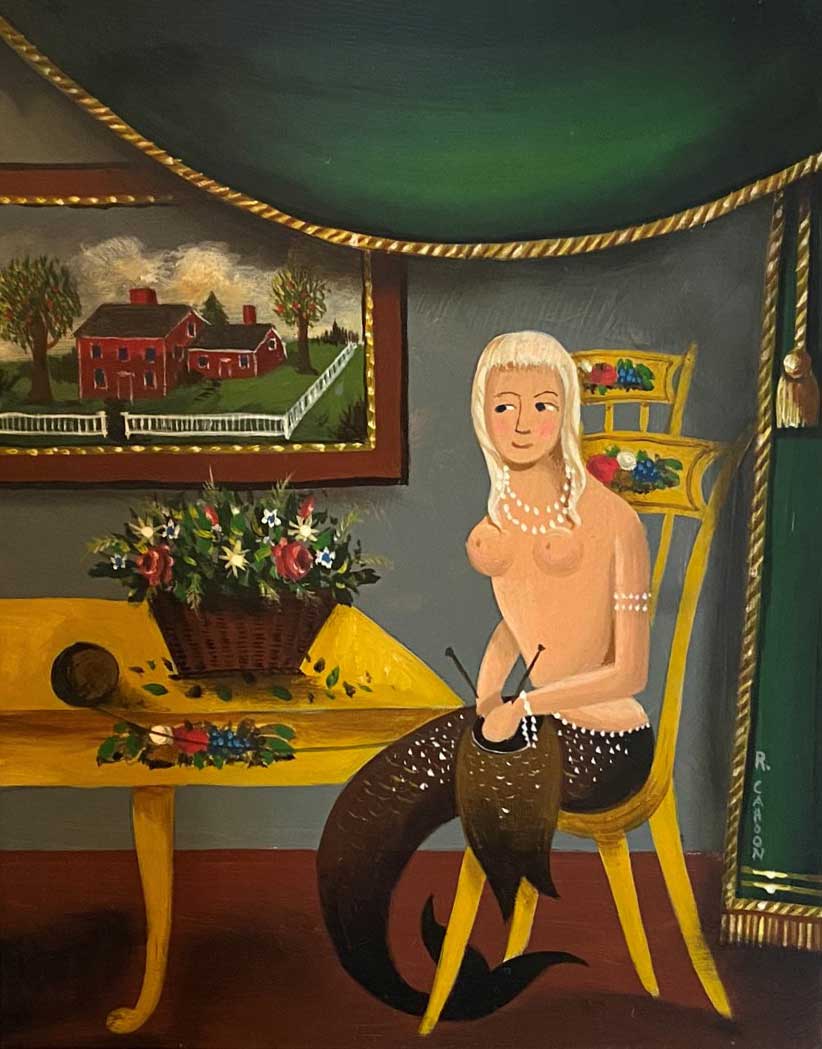
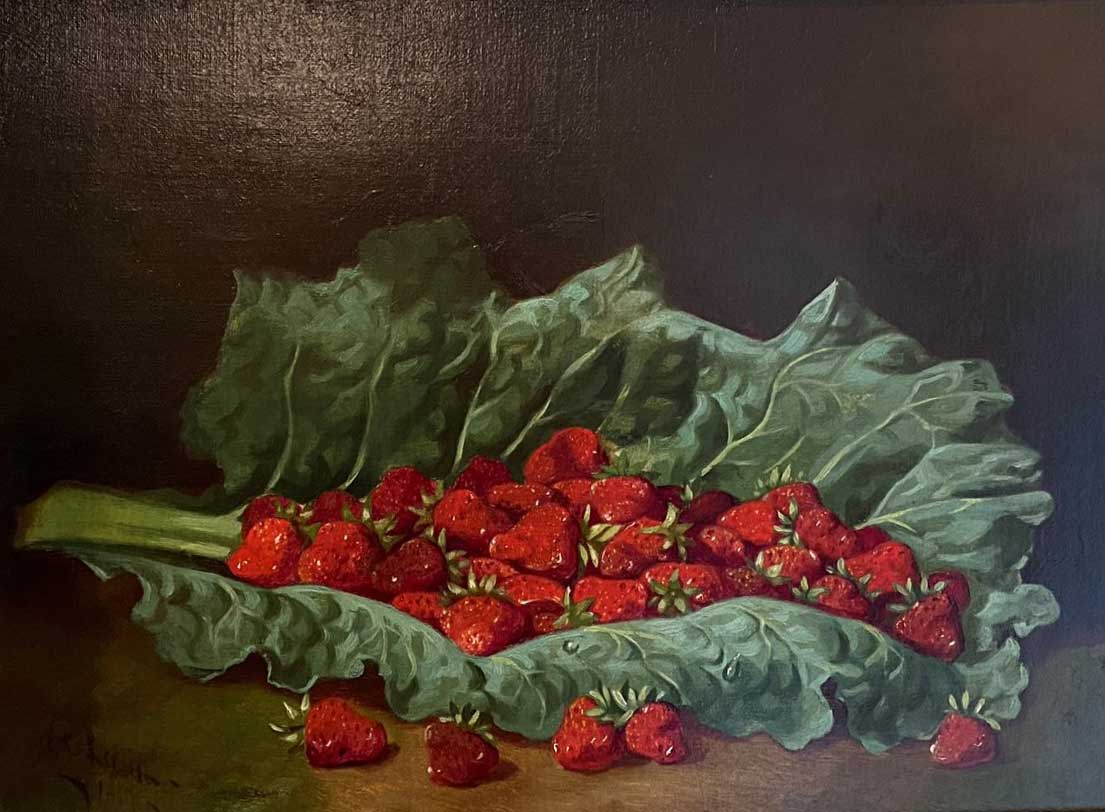
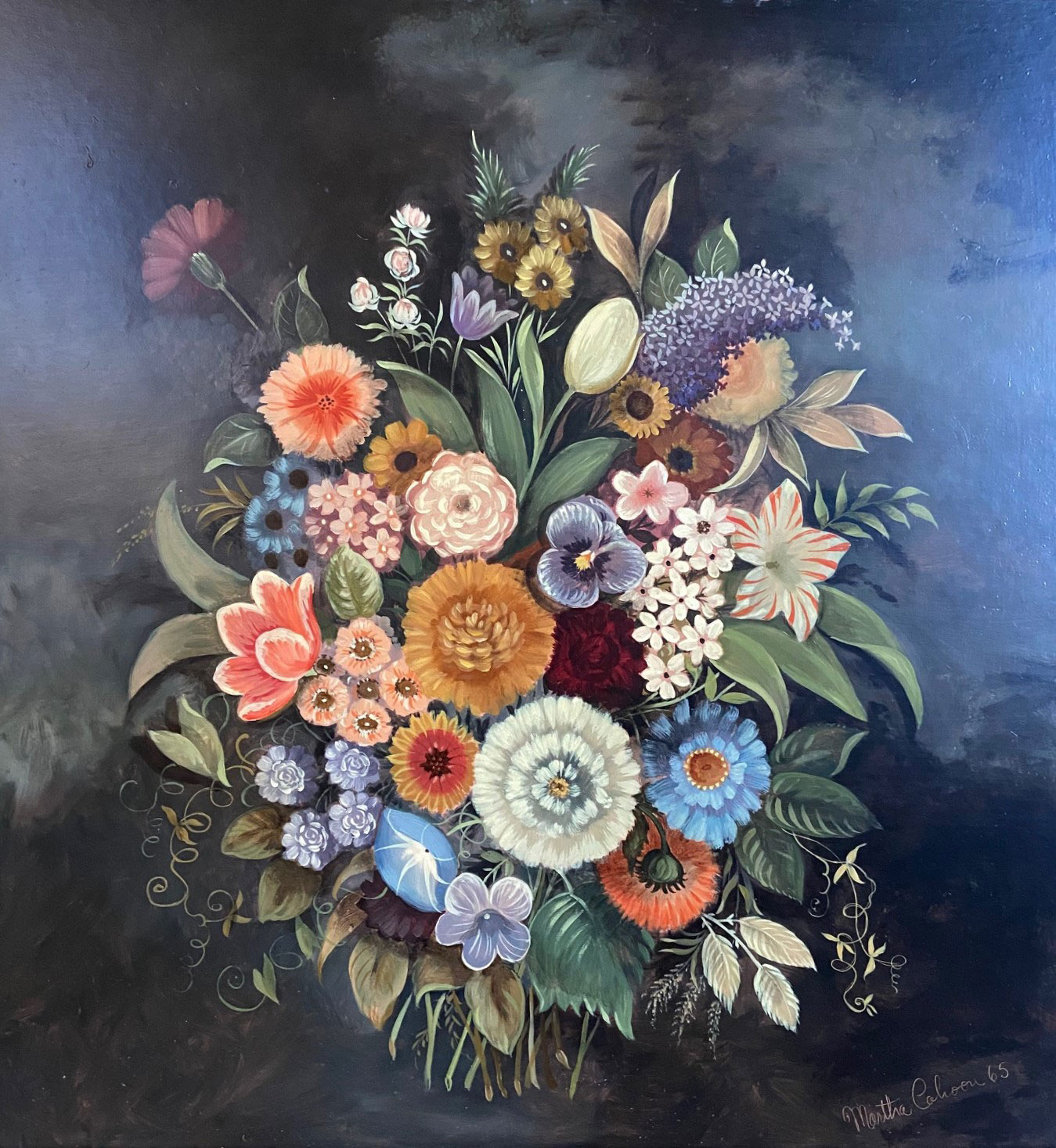
In the early 1980s, Cotuit resident Rosemary Rapp, a savvy art collector, artist, and art historian contemplated establishing a museum to exhibit her personal collection. She and her husband Keith had been acquiring 19th and early 20th century American art since the late 1950s, and their collection included notable landscape, nautical, and still life paintings by artists such as William Bradford, James E. Buttersworth, Benjamin Champney, Levi Wells Prentice, the American impressionist John J. Enneking, and Alvin Fisher of the Hudson River School. Friends had been encouraging Rosemary to found a museum for many years. “People would come to my home and see the art and say, ‘you should have a museum’…I saw it as something that must be done,” she recalled.
Rosemary also ran a nearby art supply shop and was looking for a new location for her store when the antique Zenas Crocker House in Cotuit came on the market. The house was the home, studio, and gallery of the well-known folk artists Martha and Ralph Cahoon. Ralph had recently passed away and Martha had decided she could not maintain the house on her own.
When Rosemary first walked in the building and felt the synergy between her ideas and the house’s historical and artistic lineage, she quickly decided the building “would lend itself beautifully as a museum.” She embraced the possibilities of sharing her own collection of American art with the public, preserving a very important part of Cotuit’s architectural history, and providing a permanent home for Martha and Ralph Cahoon’s art and archives. She then enlisted the aid of her husband Keith, who thought it was a “great idea, a brilliant idea” as well as her children, Stewart, William, Jan and Jessica.
Significant time and effort was required to jump start the project and to make necessary renovations to the building while retaining its historical integrity. Rosemary began to collect Ralph and Martha’s art, and to honor them, as well as her seed collection, she decided to name the museum the Cahoon Museum of American Art. On September 18, 1984 the Museum opened its doors free of charge. This “artful debut” was lauded by The Cape Cod Times, who reviewed the Museum and concluded, “another jewel has been added to Cape Cod’s treasure chest of delightful intimate Museums.” The Cahoon soon achieved non-profit status and became a member of the American Association of Museums.
A series of lectures as well as workshops, demonstrations, and educational programs quickly followed and the Cahoon continues this robust programming today. The museum’s popularity encouraged Rosemary to soon hire a director to manage the museum and curate special exhibitions. Over the past 35 years the museum has presented more than 250 unique art exhibitions of work by American artists of regional and national significance. A devoted scholar, Rosemary continues to be involved in special projects and a catalogue raisonné of the art of Ralph and Martha Cahoon.
Because the Cahoon Museum has a small, but growing, collection of over 400 artworks, the Museum leads with its strength in exhibitions. Over the years, the museum has gained a reputation for curating creative, high-quality exhibitions on individual artists as well as group and themed exhibitions. Most recently, the exhibitions have combined historic American art with contemporary art in conversation.
This interchange of old and new is directly connected to our facilities, as the museum is housed in a historic building with a modern gallery addition. Displaying art in a historic house can be a challenge as we have to work with the available wall space and unique architectural features. But it also inspires innovation. The house carries the patina of age and layers of decoration – early American stenciling in the front stairway and 20th century wall and floor stencils by the Cahoons, for example – and this influences interpretation of artwork by either grounding it within the intimate setting of a domestic space or promoting a contrast between new art and the historic living spaces. The room-sized galleries in the historic building give us a chance to display smaller scale art and concentrated groupings.
The Cahoon Museum of American Art’s collection of art represents nearly every medium, including paintings, three-dimensional art, works on paper, and furniture dating from the 18th century to the present.
The Cahoon Museum has a strong connection to Ralph (1910-1982) and Martha Cahoon (1905-1999) because the historic building was once their home and art studio. Not only were the Cahoons good stewards of the historic home, they had a deep love of American history. Mixing the Museum’s collection of American art with paintings and painted furniture by the Cahoons works well because of their nostalgic references to history.
The Museum’s collection of artwork by Ralph and Martha Cahoon adds a strong folk art flavor, which I really enjoy. I consider the Cahoons’ sense of whimsy and nostalgia for American history very important ingredients to the Cahoon Museum’s uniqueness. There is a license to collect and exhibit artwork that falls outside of traditional genres, either in terms of subject matter or material; keeping in the spirit of the Cahoons gives us permission to be unconventional and have fun with surprising combinations of historic reference and pure imagination. The Cahoons’ story is also deeply connected to a specific time and culture in Cape Cod history, which – along with the Crocker home – delivers a strong sense of authenticity. It is a special and very unique connection to Cape Cod and New England.
The Cahoon Museum has had a slow and careful approach to growing its collection, knowing that preserving artwork in perpetuity requires many resources, including museum-quality storage space, staff to manage and interpret the art, and conservation and preservation funding. We acquire works through gifts and donations, including bequests, and also through purchase. The Cahoon Society and Director’s Circle patron groups have provided annual funding for artwork purchases, and many of the Museum’s most important paintings have come through the generosity of this collecting group. By thoughtfully and intentionally building a collection, the Cahoon Museum ensures that new additions have a connection to core pieces or fill in a gap in a collecting area the museum wishes to develop.
As the Cahoon Museum collection grows, I keep in mind the vision of where the Cahoon is going. As a regional museum with roots in Cape Cod, I think of the legacy as an organization that we are leaving for our community – both locally and throughout New England.
-Sarah Johnson, Director
FOUNDING AND GROWTH OF THE CAPE COD MUSEUM OF ART
Potter and sculptor Harry Holl was central to the founding of the Cape Cod Museum of Art. Inspired by his father-in-law, the sculptor Arnold Geissbuhler, and with the support of his friend, the artist and lawyer, Roy Freed, Holl envisioned creating an art museum. His dream was to have a permanent home to display and preserve the work of artists associated with Cape Cod and the Islands. Together, Holl Geissbuhler, and Freed assembled a small group of artists, educators and community activists and incorporated the Scargo Lake Museum on January 29, 1981.
In 1982, the museum changed its name to the Cape Museum of Fine Arts. In its early years, the museum operated out of a rented storefront on route 6A in Dennis Village and eventually leased land on the grounds of the Cape Playhouse. The Davenport West family donated a building to permanently house the museum’s growing collection of fine art; the building was moved in 11 pieces by 7 trucks from South Harwich to Dennis in 1987. By 1990, the new facility opened as a year-round museum with seven galleries, and auditorium, sculpture garden, museum shop, administrative offices, conference room, library, art storage area, and an elevator serving all floors. The Cape Museum’s Weny Education Center, completed in 2003, added a separate entrance and large, open studio space for classes and workshops.
In 2004, the museum changed its name again to the Cape Cod Museum of Art. CCMoA’s founders were concerned that the best art produced in the region would leave Cape Cod and end up being owned by collectors and museums all over the country so that future generations of Cape and Islander children would have no concrete examples of their artistic heritage. With that in mind, the museum choses to focus its collections on work inspired by our region as well as art that has inspired the artists of our region.
Several Cape teachers have been very influential in Cape Cod and American art history, including Charles Hawthorne, Henry Hensche, R. H. Ives Gammell, and Hans Hofmann, all represented in the Cape Museum’s collection. Many of their students are also included in the collection. They represent a series of interrelationships – student to teacher – colleague to colleague – which unites the artistic heritage of the region.
The Cape Cod Museum of Art founders were concerned that the best art produced in the region would leave Cape Cod and end up being owned by collectors and museums all over the country so that future generations of Cape and Islands children would have no concrete examples of their artistic heritage. With that in mind, the museum has chosen to focus its collections on work inspired by our region as well as art that has inspired the artists of our region.
Former CCMoA Executive Director, Elizabeth Ives Hunter, highlights artists whose work is in the museum’s collection:
The Cape’s natural beauty and luminous light inspired Impressionists to seek it out at the turn of the 20th century. In 1899, Charles W. Hawthorne (1782-1930) established the first art school on the Cape, the Cape School of Art, in Provincetown. He also built a reputation as a painter of portraits. His painting, “Portrait of Anita” is a fine example of his work.
Edwin Dickinson (1891-1978) (“Female Nude Study”) and R. H. Ives Gammell (1883-1981) (“Angel with Censer”) both studied with Hawthorne as young men, and then followed very different paths. Dickenson concentrated on the grays of the coastal landscape, and Gammill pursued intellectual and allegorical interests.
Hawthorne also taught Henry Hensche (1899-1982), who later took over the Cape School of Art, and taught there for 50 years. Hensche taught his students to “see the world as a mosaic of color changes.” His painting “Tea Time” illustrates impressionist color observation in a formal still life arrangement. Hensche’s student, Hilda Neily learned the art of impressionist observation as shown in her outdoor arrangement, “Ginger Jar in Morning.”
After the Second World War, the Cape saw a tremendous influx of eager art students. Sal Del Deo (“Still Life Concept II”) came to study with Hensche and still lives in Provincetown. Varujan Boghosian (“Something for Magritte”) and Robert Douglas Hunter (“The Life Guard”) and other artists represented in the permanent collection, all came at this time, interacted with each and developed their own personal styles.
At the same time that Gammell and Hensche were teaching impressionist and academic techniques, German-born Hans Hofmann (1880-1966) was defining abstract expressionism. Hofmann’s “Untitled” epitomizes his work from the early 1950’s. Among the many Hofmann students represented in the CCMoA collection are Haynes Ownby (1929-2001) (“Homage to a Crop Circle”), Robert Henry (“The Surprise Bravo”), Selina Trieff (1934-2015) (“Two Figures – Red and Black”) and Sam Feinstein (1915-2003) (“Summertime”).
Some artists sought other areas of the Cape in which to settle. CCMoA’s co-founder, Harry Holl (1943-2012), settled in Dennis and founded Scargo Pottery, a center of sculpture and ceramics, and trained many of the serious potters on the Cape. The works of his father-in-law, Swiss-born sculptor Arnold Geissbuhler (1897-1993) (“Portrait of Mr. Virot”), formed the core collection of the museum. Art Historian Al Kochka has studied Geissbuhler’s influences, his life, and his work, and produced an important research document for CCMoA.
Collection Highlights
Alexander Calder
An Alexander Calder print gifted by David and Nancy Kaplan is among the collection favorites. While primarily known for his mobiles and large sculptures, Alexander Calder also produced paintings, drawings, jewelry, toys and prints.Calder worked with Stanley William Hayter, who founded the Atelier 17 Workshop in Paris for graphic artists and helped graphic arts to be recognized an art form.
Calder’s impact on Cape Cod art can be seen in the work of Arthur Bauman, whose mobile, “Once in a Blue Moon,” is a masterpiece of mobile art. Bauman began to make mobiles in 1968 after watching films about Calder when he was in the U.S. Foreign Service in Ahman, Jordan.
The Morris Cohen Collection: American Impressionists
John Joseph Enneking & Joseph Eliot Enneking
The late Morris Cohen (1911-2005) gifted the museum a collection of paintings by John Joseph Enneking (1841-1916) and Joseph Elliot Enneking (1881-1942). Professor Cohen taught at MIT and is considered the father of modern materials science. He received numerous awards for his work in this country and abroad, including the National Medal of Science, given by President Carter in 1977.
John Joseph Enneking (1841-1916), perhaps America’s earliest impressionist painter, was involved in both the pre-impressionist and impressionist worlds of the late nineteenth century.
Enneking settled in Boston’s suburb of Hyde Park in 1876 and became one of Boston’s best-known landscape painters. Strongly tied to his local surroundings, Enneking was a devoted conservationist and acted as chairman of the Park Board during the end of his career, helping to preserve the saltwater marshes of the Neponset River, as well as areas of the Stony Brook Reservation and Boston’s Fenway. In 1967, Enneking’s efforts were rewarded when State Representative Michael Feeney renamed a section of the Turtle Pond Parkway in Hyde Park the Enneking Parkway.
As a plein-air painter, Enneking’s work was known and admired all over the country. He enjoyed a distinguished career as an artist and served as President of the Boston Art Club.
Joseph Eliot Enneking studied with his father and at the School of the Museum of Fine Arts, Boston, with Joseph DeCamp, Frank Benson and Edmond C. Tarbell. He was an impressionist painter who recorded the New England landscape and was known for his sun-splashed landscapes.
 Anonoymous Gift of Hans Hofmann Painting
Anonoymous Gift of Hans Hofmann Painting
“When I paint, I improvise. I deny theory and method and rely only on empathy and feeling. In teaching, it is just the opposite. I must account for every line, shape and color. One is forced to explain the inexplicable.” – Hans Hofmann
Hans Hofmann (1880 – 1966), renowned Provincetown artist and teacher, was considered by a prominent Abstract Expressionist, a movement of modern art which catapulted America to the forefront of the world art stage in the middle of the 20th century.
The Cape Cod Museum of Art’s Hoffman painting, “Untitled”, is a fine example of his work. Former Director Elizabeth Ives commented that “Hoffman contributed so much to the art of Cape Cod and to American art in general. This piece compliments our large collection of the work of his students. “Untitled” is an example of how Hofmann created surface areas of intense color that produce a dynamic tension between and among the forms, lines and textures.”
Al Kochka, an art historian and CCMoA’s Director of The Geissbuhler Project, added, “Hofmann motivated a mighty surge of creative artistic output that inspired an estimated 6,000 students whom he taught at his schools. So many of his students achieved careers in their own right.”
From the mid-30’s through the late 50’s, Hofmann divided his time teaching between New York and Provincetown. Among his students whose work is in CCMoA’s permanent collection are: Robert Beauchamp, Fritz Bultman, Sheila Burlingame, Peter Busa, Sam Feinstein, Robert Fisher, William Freed, James Gahagan, Red Grooms, Myrna Harrison, Robert Henry, Charles Kaeselau, Mary Kass, Erik Koch, Jack Larned, Toni Laselle, William Littlefield, George McNeil, Lillian Orlowsky, Haynes Owmby, Earl Pierce, Paul Resika, Jo Sandman, Selina Trieff, Tony Vevers and Tara Yamamoto.
The Founding of the Cahoon Museum of American Art
In the early 1980s, Cotuit resident Rosemary Rapp, a savvy art collector, artist, and art historian contemplated establishing a museum to exhibit her personal collection. She and her husband Keith had been acquiring 19th and early 20th century American art since the late 1950s, and their collection included notable landscape, nautical, and still life paintings by artists such as William Bradford, James E. Buttersworth, Benjamin Champney, Levi Wells Prentice, the American impressionist John J. Enneking, and Alvin Fisher of the Hudson River School. Friends had been encouraging Rosemary to found a museum for many years. “People would come to my home and see the art and say, ‘you should have a museum’…I saw it as something that must be done,” she recalled.
Rosemary also ran a nearby art supply shop and was looking for a new location for her store when the antique Zenas Crocker House in Cotuit came on the market. The house was the home, studio, and gallery of the well-known folk artists Martha and Ralph Cahoon. Ralph had recently passed away and Martha had decided she could not maintain the house on her own.
When Rosemary first walked in the building and felt the synergy between her ideas and the house’s historical and artistic lineage, she quickly decided the building “would lend itself beautifully as a museum.” She embraced the possibilities of sharing her own collection of American art with the public, preserving a very important part of Cotuit’s architectural history, and providing a permanent home for Martha and Ralph Cahoon’s art and archives. She then enlisted the aid of her husband Keith, who thought it was a “great idea, a brilliant idea” as well as her children, Stewart, William, Jan and Jessica.
Significant time and effort was required to jump start the project and to make necessary renovations to the building while retaining its historical integrity. Rosemary began to collect Ralph and Martha’s art, and to honor them, as well as her seed collection, she decided to name the museum the Cahoon Museum of American Art. On September 18, 1984 the Museum opened its doors free of charge. This “artful debut” was lauded by The Cape Cod Times, who reviewed the Museum and concluded, “another jewel has been added to Cape Cod’s treasure chest of delightful intimate Museums.” The Cahoon soon achieved non-profit status and became a member of the American Association of Museums.
A series of lectures as well as workshops, demonstrations, and educational programs quickly followed and the Cahoon continues this robust programming today. The museum’s popularity encouraged Rosemary to soon hire a director to manage the museum and curate special exhibitions. Over the past 35 years the museum has presented more than 250 unique art exhibitions of work by American artists of regional and national significance. A devoted scholar, Rosemary continues to be involved in special projects and a catalogue raisonné of the art of Ralph and Martha Cahoon.
Collecting and the Cahoon Museum
Because the Cahoon Museum has a small, but growing, collection of over 400 artworks, the Museum leads with its strength in exhibitions. Over the years, the museum has gained a reputation for curating creative, high-quality exhibitions on individual artists as well as group and themed exhibitions. Most recently, the exhibitions have combined historic American art with contemporary art in conversation.
This interchange of old and new is directly connected to our facilities, as the museum is housed in a historic building with a modern gallery addition. Displaying art in a historic house can be a challenge as we have to work with the available wall space and unique architectural features. But it also inspires innovation. The house carries the patina of age and layers of decoration – early American stenciling in the front stairway and 20th century wall and floor stencils by the Cahoons, for example – and this influences interpretation of artwork by either grounding it within the intimate setting of a domestic space or promoting a contrast between new art and the historic living spaces. The room-sized galleries in the historic building give us a chance to display smaller scale art and concentrated groupings.
The Cahoon Museum of American Art’s collection of art represents nearly every medium, including paintings, three-dimensional art, works on paper, and furniture dating from the 18th century to the present.
The Cahoon Museum has a strong connection to Ralph (1910-1982) and Martha Cahoon (1905-1999) because the historic building was once their home and art studio. Not only were the Cahoons good stewards of the historic home, they had a deep love of American history. Mixing the Museum’s collection of American art with paintings and painted furniture by the Cahoons works well because of their nostalgic references to history.
The Museum’s collection of artwork by Ralph and Martha Cahoon adds a strong folk art flavor, which I really enjoy. I consider the Cahoons’ sense of whimsy and nostalgia for American history very important ingredients to the Cahoon Museum’s uniqueness. There is a license to collect and exhibit artwork that falls outside of traditional genres, either in terms of subject matter or material; keeping in the spirit of the Cahoons gives us permission to be unconventional and have fun with surprising combinations of historic reference and pure imagination. The Cahoons’ story is also deeply connected to a specific time and culture in Cape Cod history, which – along with the Crocker home – delivers a strong sense of authenticity. It is a special and very unique connection to Cape Cod and New England.
The Cahoon Museum has had a slow and careful approach to growing its collection, knowing that preserving artwork in perpetuity requires many resources, including museum-quality storage space, staff to manage and interpret the art, and conservation and preservation funding. We acquire works through gifts and donations, including bequests, and also through purchase. The Cahoon Society and Director’s Circle patron groups have provided annual funding for artwork purchases, and many of the Museum’s most important paintings have come through the generosity of this collecting group. By thoughtfully and intentionally building a collection, the Cahoon Museum ensures that new additions have a connection to core pieces or fill in a gap in a collecting area the museum wishes to develop.
As the Cahoon Museum collection grows, I keep in mind the vision of where the Cahoon is going. As a regional museum with roots in Cape Cod, I think of the legacy as an organization that we are leaving for our community – both locally and throughout New England.
-Sarah Johnson, Director
A Brief History of the Cape Cod Museum of Art
FOUNDING AND GROWTH OF THE CAPE COD MUSEUM OF ART
Potter and sculptor Harry Holl was central to the founding of the Cape Cod Museum of Art. Inspired by his father-in-law, the sculptor Arnold Geissbuhler, and with the support of his friend, the artist and lawyer, Roy Freed, Holl envisioned creating an art museum. His dream was to have a permanent home to display and preserve the work of artists associated with Cape Cod and the Islands. Together, Holl Geissbuhler, and Freed assembled a small group of artists, educators and community activists and incorporated the Scargo Lake Museum on January 29, 1981.
In 1982, the museum changed its name to the Cape Museum of Fine Arts. In its early years, the museum operated out of a rented storefront on route 6A in Dennis Village and eventually leased land on the grounds of the Cape Playhouse. The Davenport West family donated a building to permanently house the museum’s growing collection of fine art; the building was moved in 11 pieces by 7 trucks from South Harwich to Dennis in 1987. By 1990, the new facility opened as a year-round museum with seven galleries, and auditorium, sculpture garden, museum shop, administrative offices, conference room, library, art storage area, and an elevator serving all floors. The Cape Museum’s Weny Education Center, completed in 2003, added a separate entrance and large, open studio space for classes and workshops.
In 2004, the museum changed its name again to the Cape Cod Museum of Art. CCMoA’s founders were concerned that the best art produced in the region would leave Cape Cod and end up being owned by collectors and museums all over the country so that future generations of Cape and Islander children would have no concrete examples of their artistic heritage. With that in mind, the museum choses to focus its collections on work inspired by our region as well as art that has inspired the artists of our region.
Several Cape teachers have been very influential in Cape Cod and American art history, including Charles Hawthorne, Henry Hensche, R. H. Ives Gammell, and Hans Hofmann, all represented in the Cape Museum’s collection. Many of their students are also included in the collection. They represent a series of interrelationships – student to teacher – colleague to colleague – which unites the artistic heritage of the region.
Cape Cod Museum of Art’s Permanent Collection
The Cape Cod Museum of Art founders were concerned that the best art produced in the region would leave Cape Cod and end up being owned by collectors and museums all over the country so that future generations of Cape and Islands children would have no concrete examples of their artistic heritage. With that in mind, the museum has chosen to focus its collections on work inspired by our region as well as art that has inspired the artists of our region.
Former CCMoA Executive Director, Elizabeth Ives Hunter, highlights artists whose work is in the museum’s collection:
The Cape’s natural beauty and luminous light inspired Impressionists to seek it out at the turn of the 20th century. In 1899, Charles W. Hawthorne (1782-1930) established the first art school on the Cape, the Cape School of Art, in Provincetown. He also built a reputation as a painter of portraits. His painting, “Portrait of Anita” is a fine example of his work.
Edwin Dickinson (1891-1978) (“Female Nude Study”) and R. H. Ives Gammell (1883-1981) (“Angel with Censer”) both studied with Hawthorne as young men, and then followed very different paths. Dickenson concentrated on the grays of the coastal landscape, and Gammill pursued intellectual and allegorical interests.
Hawthorne also taught Henry Hensche (1899-1982), who later took over the Cape School of Art, and taught there for 50 years. Hensche taught his students to “see the world as a mosaic of color changes.” His painting “Tea Time” illustrates impressionist color observation in a formal still life arrangement. Hensche’s student, Hilda Neily learned the art of impressionist observation as shown in her outdoor arrangement, “Ginger Jar in Morning.”
After the Second World War, the Cape saw a tremendous influx of eager art students. Sal Del Deo (“Still Life Concept II”) came to study with Hensche and still lives in Provincetown. Varujan Boghosian (“Something for Magritte”) and Robert Douglas Hunter (“The Life Guard”) and other artists represented in the permanent collection, all came at this time, interacted with each and developed their own personal styles.
At the same time that Gammell and Hensche were teaching impressionist and academic techniques, German-born Hans Hofmann (1880-1966) was defining abstract expressionism. Hofmann’s “Untitled” epitomizes his work from the early 1950’s. Among the many Hofmann students represented in the CCMoA collection are Haynes Ownby (1929-2001) (“Homage to a Crop Circle”), Robert Henry (“The Surprise Bravo”), Selina Trieff (1934-2015) (“Two Figures – Red and Black”) and Sam Feinstein (1915-2003) (“Summertime”).
Some artists sought other areas of the Cape in which to settle. CCMoA’s co-founder, Harry Holl (1943-2012), settled in Dennis and founded Scargo Pottery, a center of sculpture and ceramics, and trained many of the serious potters on the Cape. The works of his father-in-law, Swiss-born sculptor Arnold Geissbuhler (1897-1993) (“Portrait of Mr. Virot”), formed the core collection of the museum. Art Historian Al Kochka has studied Geissbuhler’s influences, his life, and his work, and produced an important research document for CCMoA.
Collection Highlights
Alexander Calder
An Alexander Calder print gifted by David and Nancy Kaplan is among the collection favorites. While primarily known for his mobiles and large sculptures, Alexander Calder also produced paintings, drawings, jewelry, toys and prints.Calder worked with Stanley William Hayter, who founded the Atelier 17 Workshop in Paris for graphic artists and helped graphic arts to be recognized an art form.
Calder’s impact on Cape Cod art can be seen in the work of Arthur Bauman, whose mobile, “Once in a Blue Moon,” is a masterpiece of mobile art. Bauman began to make mobiles in 1968 after watching films about Calder when he was in the U.S. Foreign Service in Ahman, Jordan.
The Morris Cohen Collection: American Impressionists
John Joseph Enneking & Joseph Eliot Enneking
The late Morris Cohen (1911-2005) gifted the museum a collection of paintings by John Joseph Enneking (1841-1916) and Joseph Elliot Enneking (1881-1942). Professor Cohen taught at MIT and is considered the father of modern materials science. He received numerous awards for his work in this country and abroad, including the National Medal of Science, given by President Carter in 1977.
John Joseph Enneking (1841-1916), perhaps America’s earliest impressionist painter, was involved in both the pre-impressionist and impressionist worlds of the late nineteenth century.
Enneking settled in Boston’s suburb of Hyde Park in 1876 and became one of Boston’s best-known landscape painters. Strongly tied to his local surroundings, Enneking was a devoted conservationist and acted as chairman of the Park Board during the end of his career, helping to preserve the saltwater marshes of the Neponset River, as well as areas of the Stony Brook Reservation and Boston’s Fenway. In 1967, Enneking’s efforts were rewarded when State Representative Michael Feeney renamed a section of the Turtle Pond Parkway in Hyde Park the Enneking Parkway.
As a plein-air painter, Enneking’s work was known and admired all over the country. He enjoyed a distinguished career as an artist and served as President of the Boston Art Club.
Joseph Eliot Enneking studied with his father and at the School of the Museum of Fine Arts, Boston, with Joseph DeCamp, Frank Benson and Edmond C. Tarbell. He was an impressionist painter who recorded the New England landscape and was known for his sun-splashed landscapes.
 Anonoymous Gift of Hans Hofmann Painting
Anonoymous Gift of Hans Hofmann Painting
“When I paint, I improvise. I deny theory and method and rely only on empathy and feeling. In teaching, it is just the opposite. I must account for every line, shape and color. One is forced to explain the inexplicable.” – Hans Hofmann
Hans Hofmann (1880 – 1966), renowned Provincetown artist and teacher, was considered by a prominent Abstract Expressionist, a movement of modern art which catapulted America to the forefront of the world art stage in the middle of the 20th century.
The Cape Cod Museum of Art’s Hoffman painting, “Untitled”, is a fine example of his work. Former Director Elizabeth Ives commented that “Hoffman contributed so much to the art of Cape Cod and to American art in general. This piece compliments our large collection of the work of his students. “Untitled” is an example of how Hofmann created surface areas of intense color that produce a dynamic tension between and among the forms, lines and textures.”
Al Kochka, an art historian and CCMoA’s Director of The Geissbuhler Project, added, “Hofmann motivated a mighty surge of creative artistic output that inspired an estimated 6,000 students whom he taught at his schools. So many of his students achieved careers in their own right.”
From the mid-30’s through the late 50’s, Hofmann divided his time teaching between New York and Provincetown. Among his students whose work is in CCMoA’s permanent collection are: Robert Beauchamp, Fritz Bultman, Sheila Burlingame, Peter Busa, Sam Feinstein, Robert Fisher, William Freed, James Gahagan, Red Grooms, Myrna Harrison, Robert Henry, Charles Kaeselau, Mary Kass, Erik Koch, Jack Larned, Toni Laselle, William Littlefield, George McNeil, Lillian Orlowsky, Haynes Owmby, Earl Pierce, Paul Resika, Jo Sandman, Selina Trieff, Tony Vevers and Tara Yamamoto.

